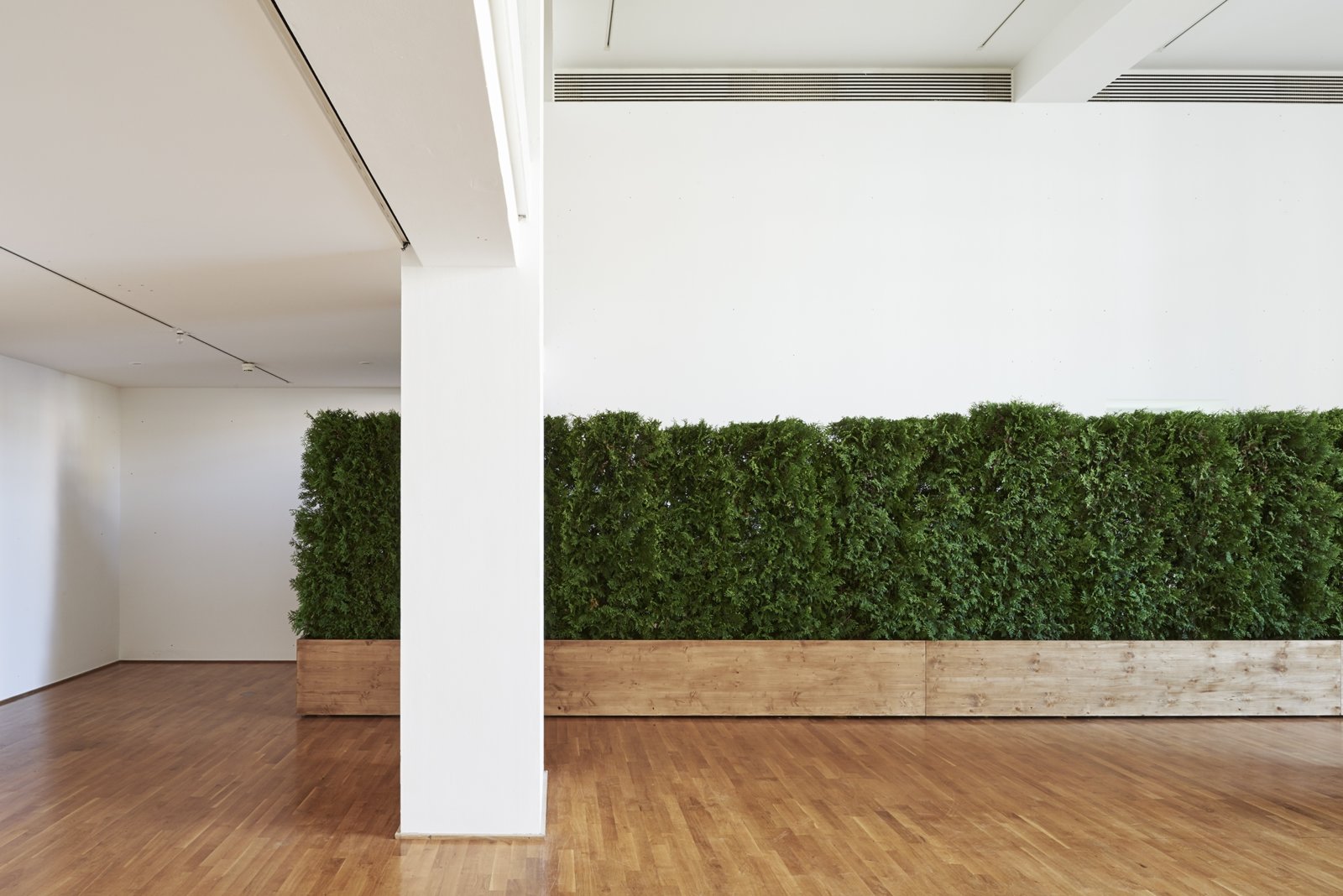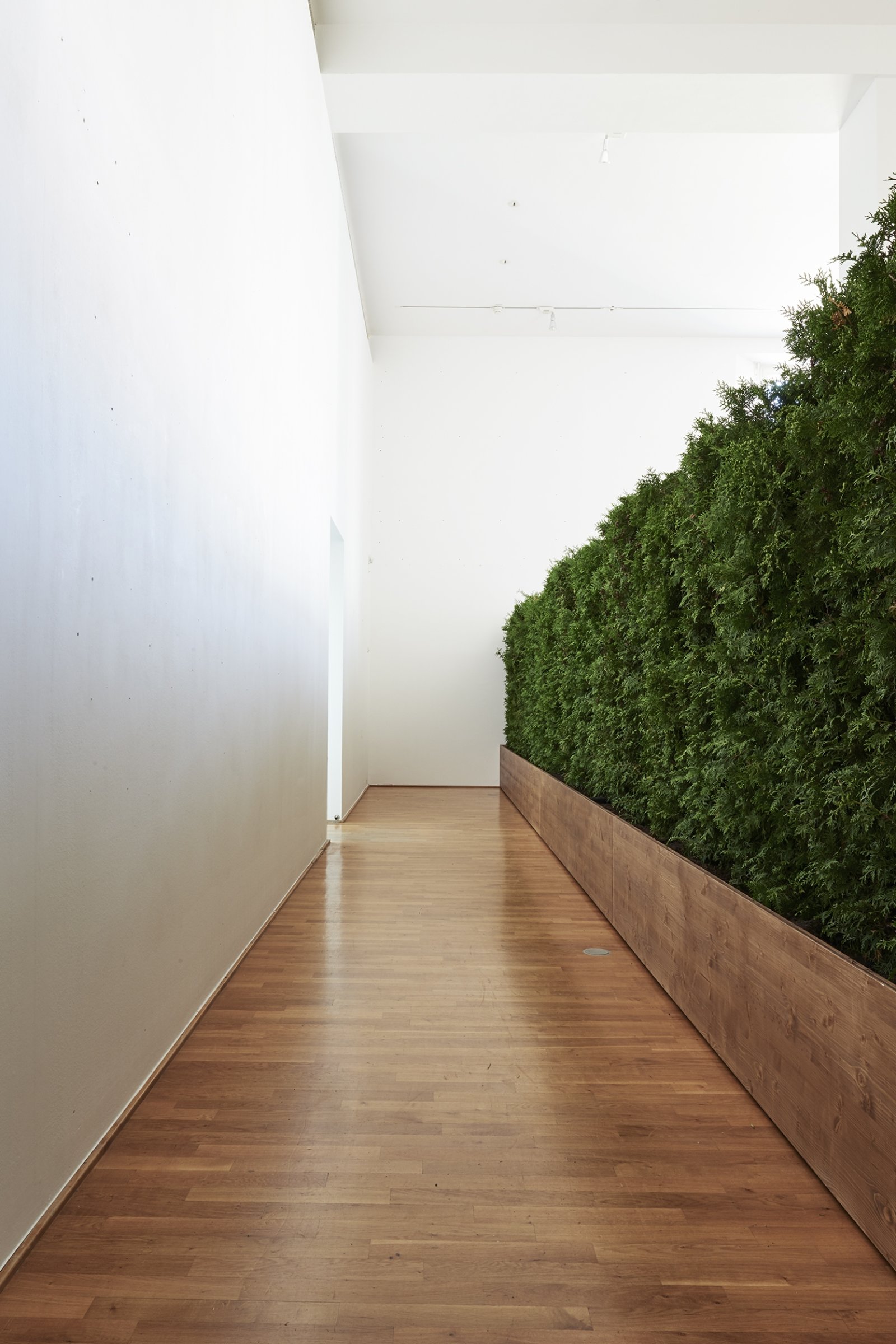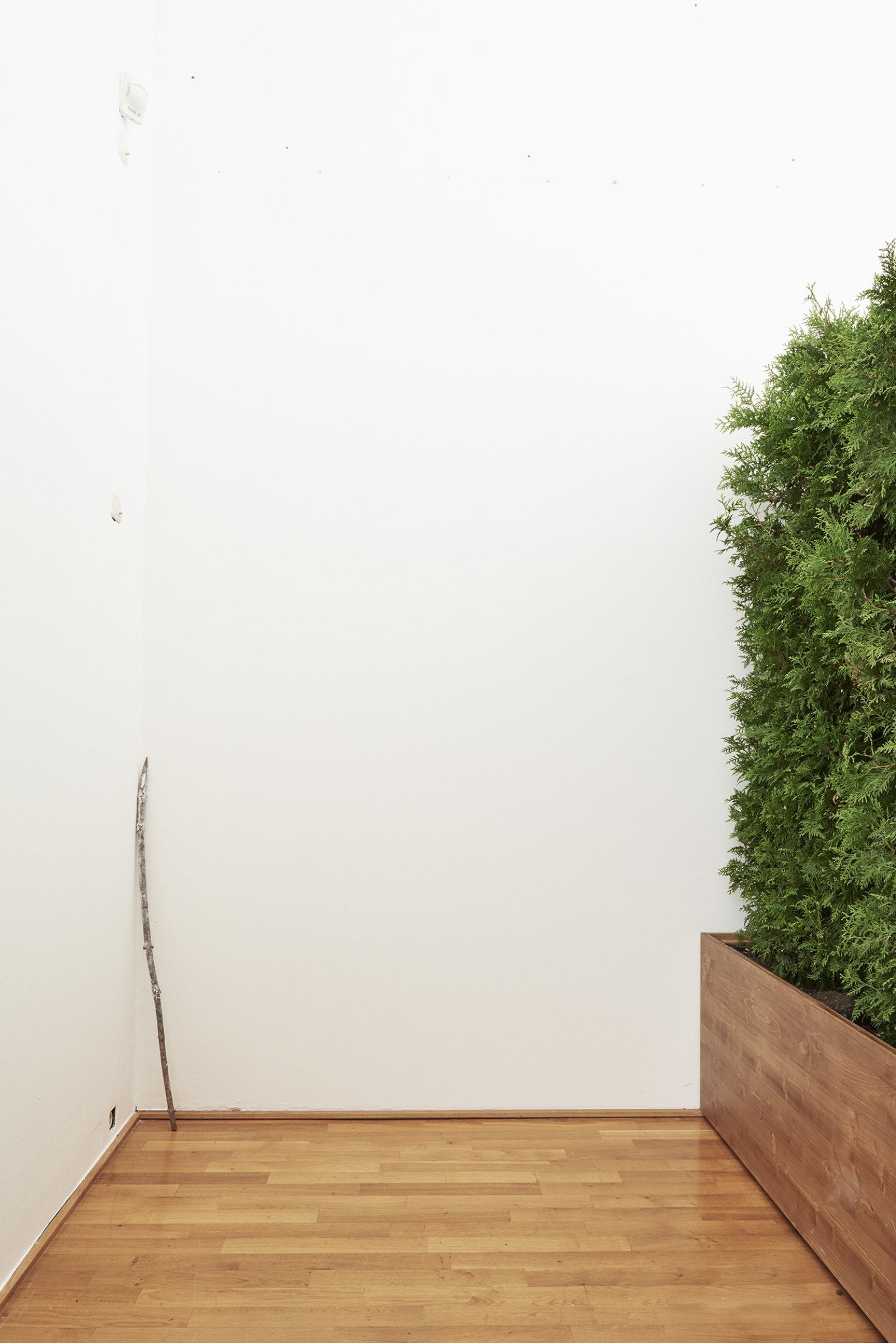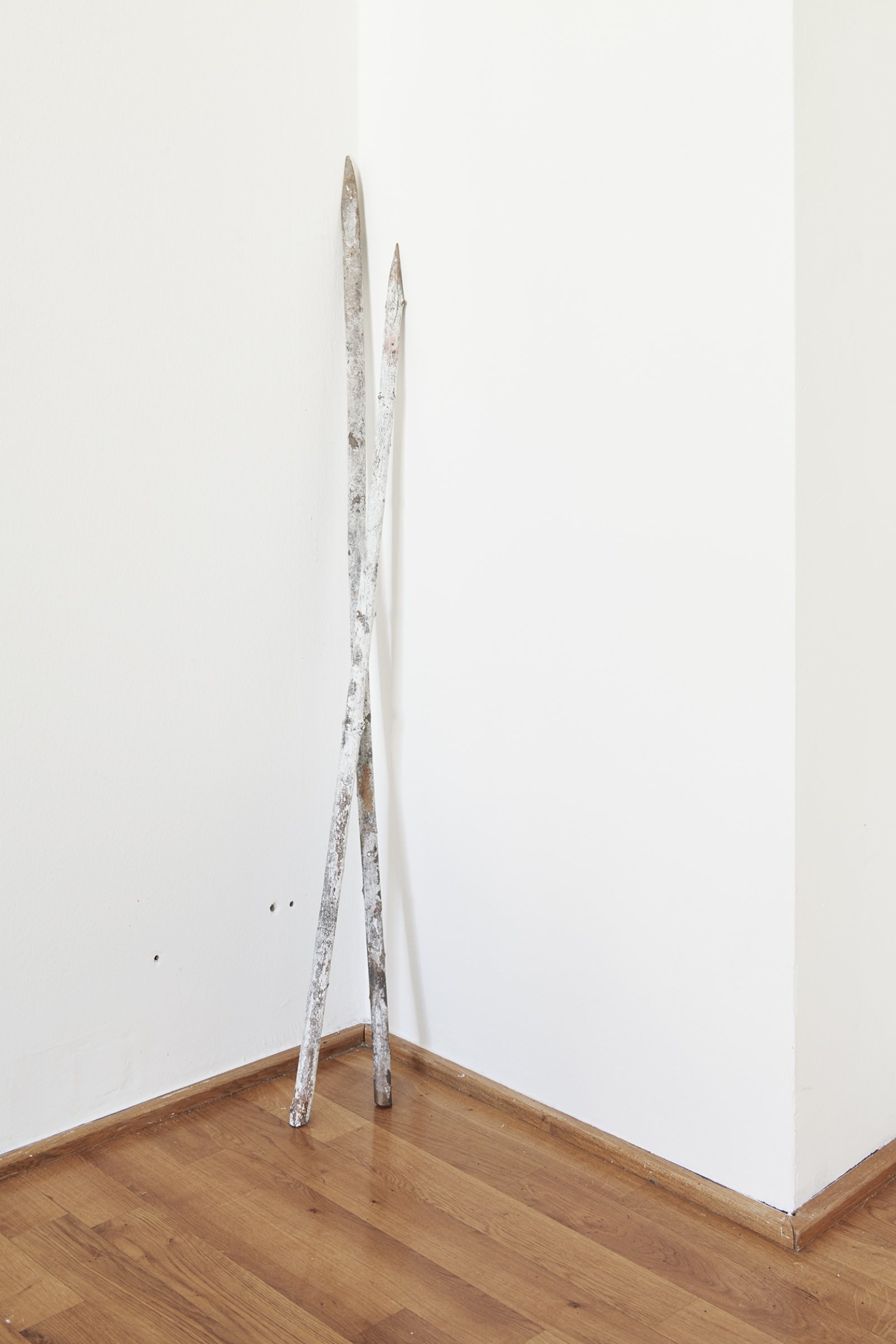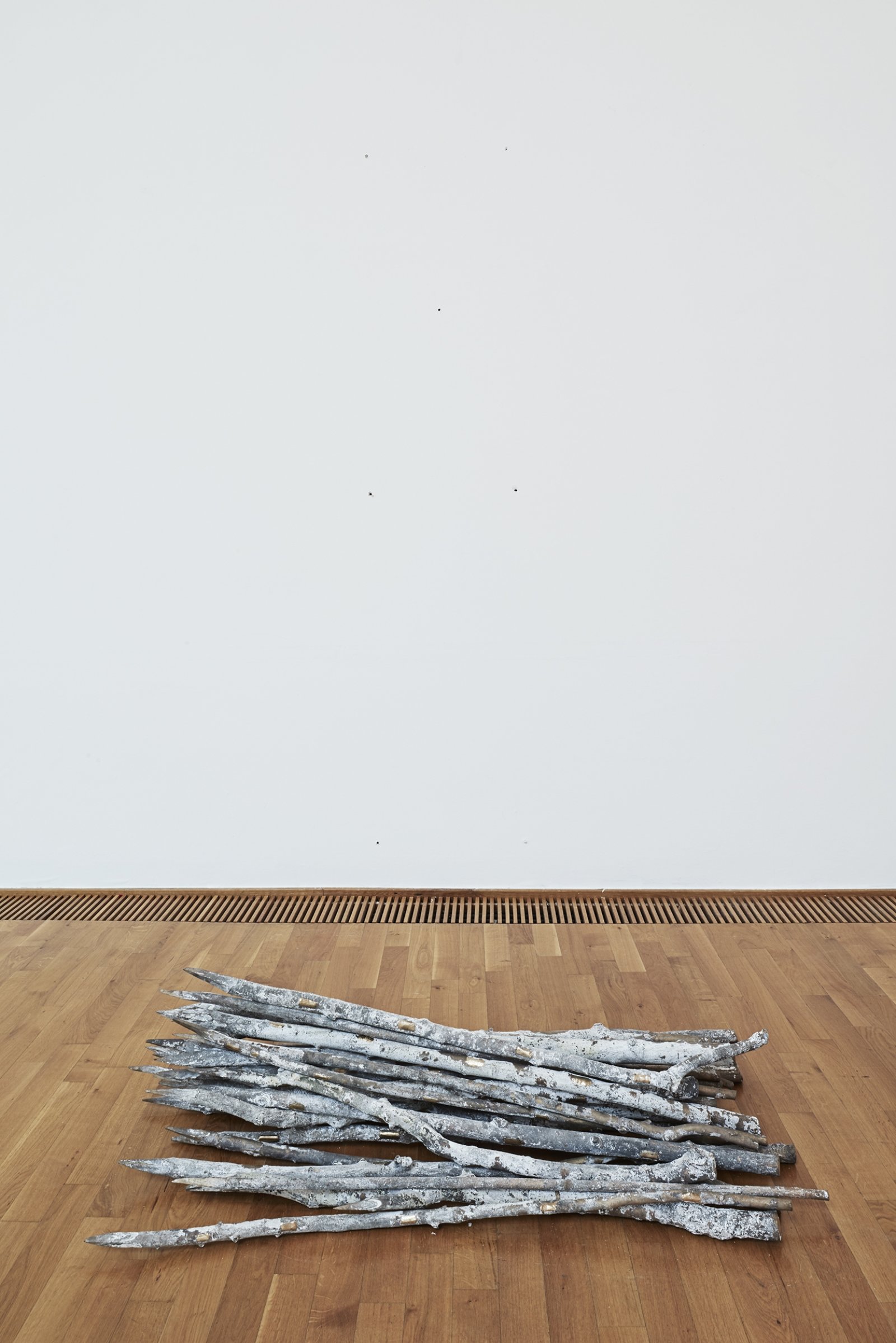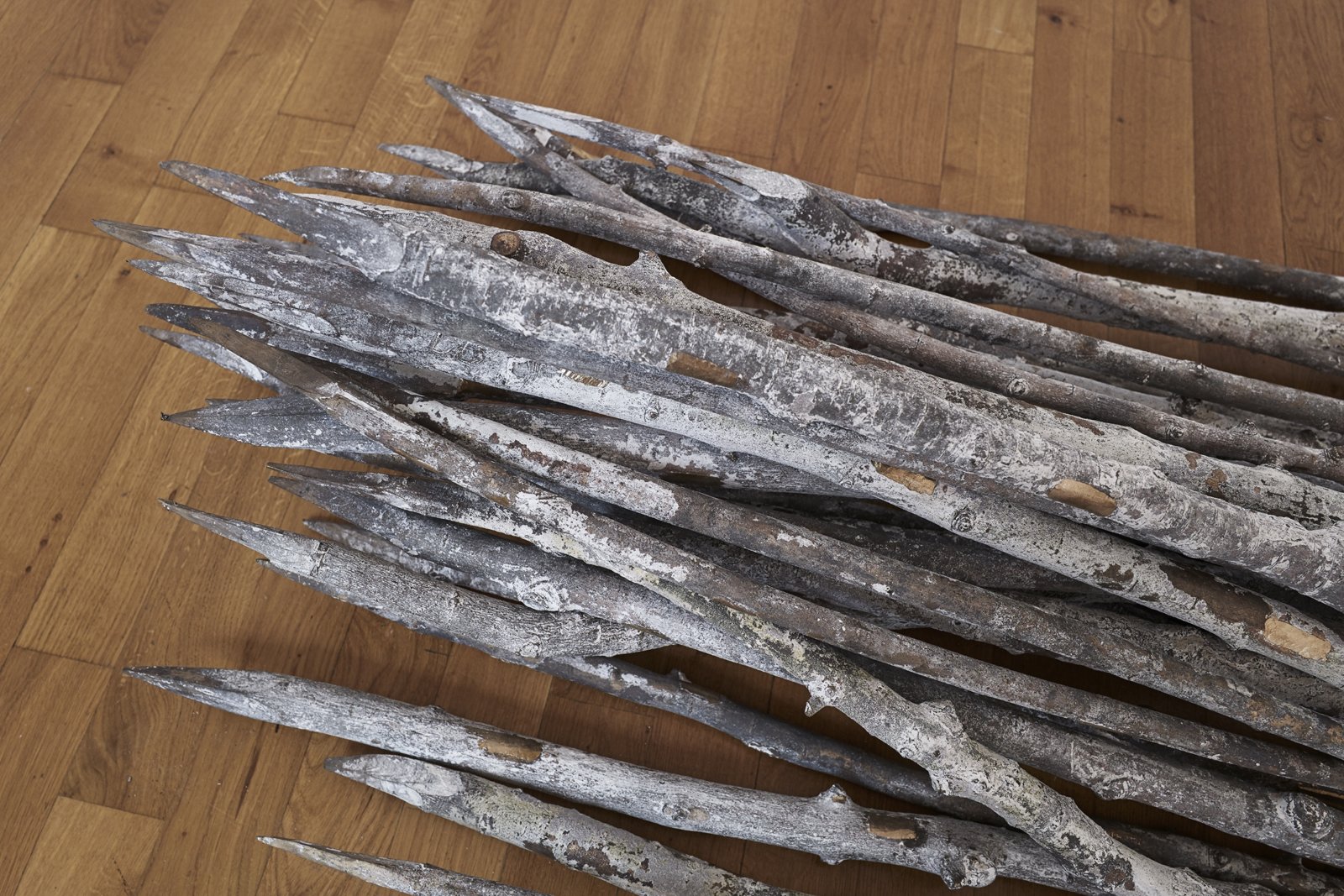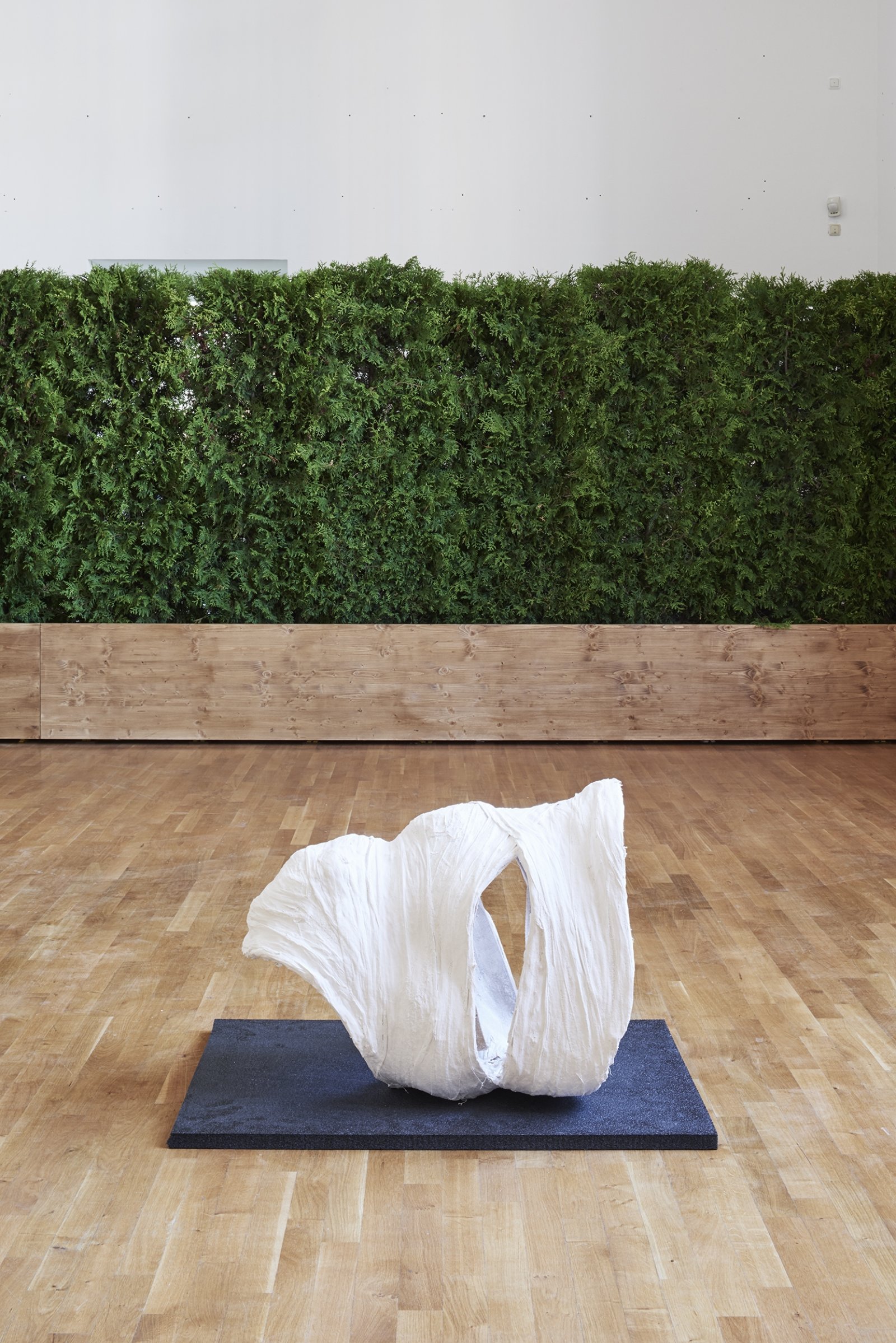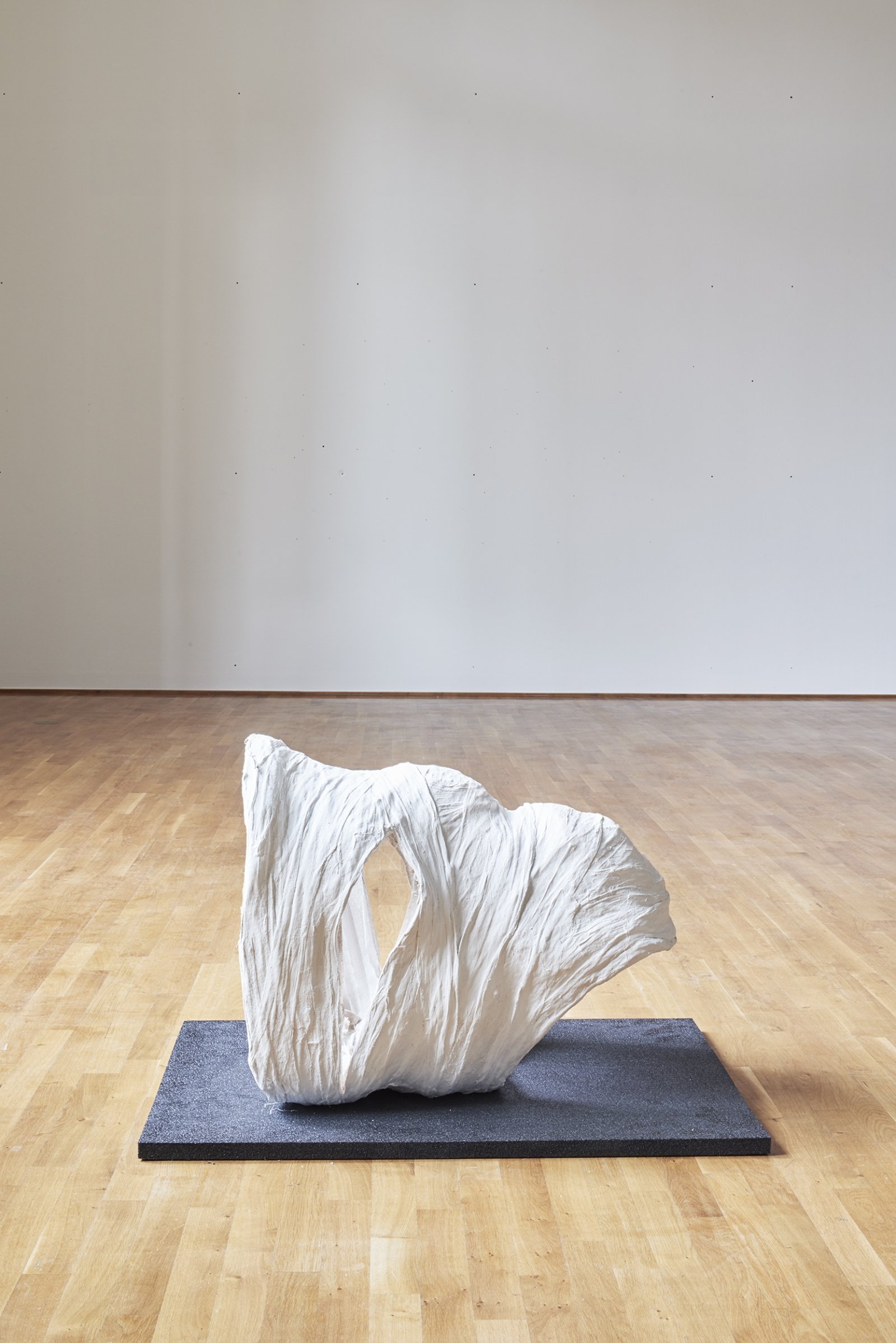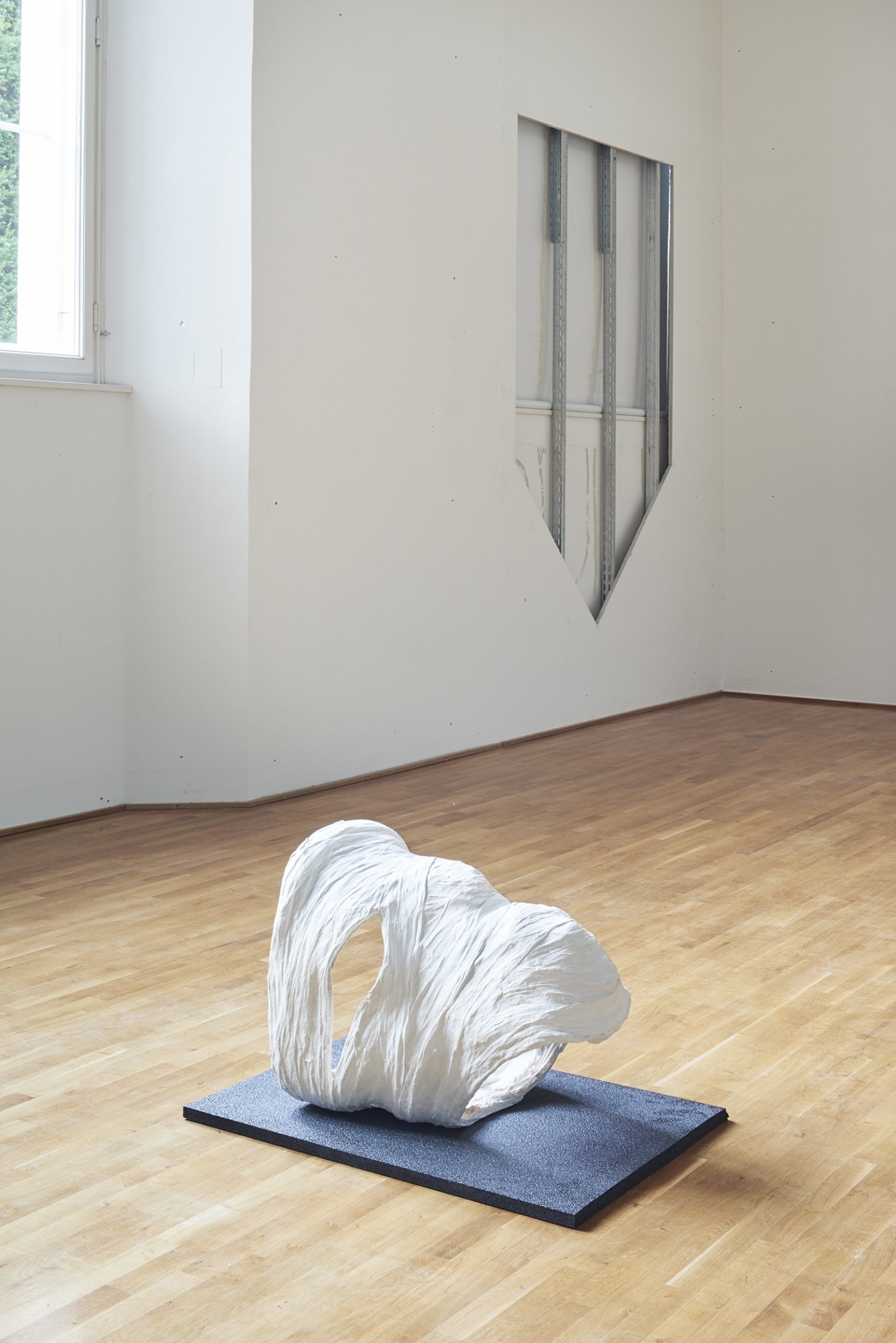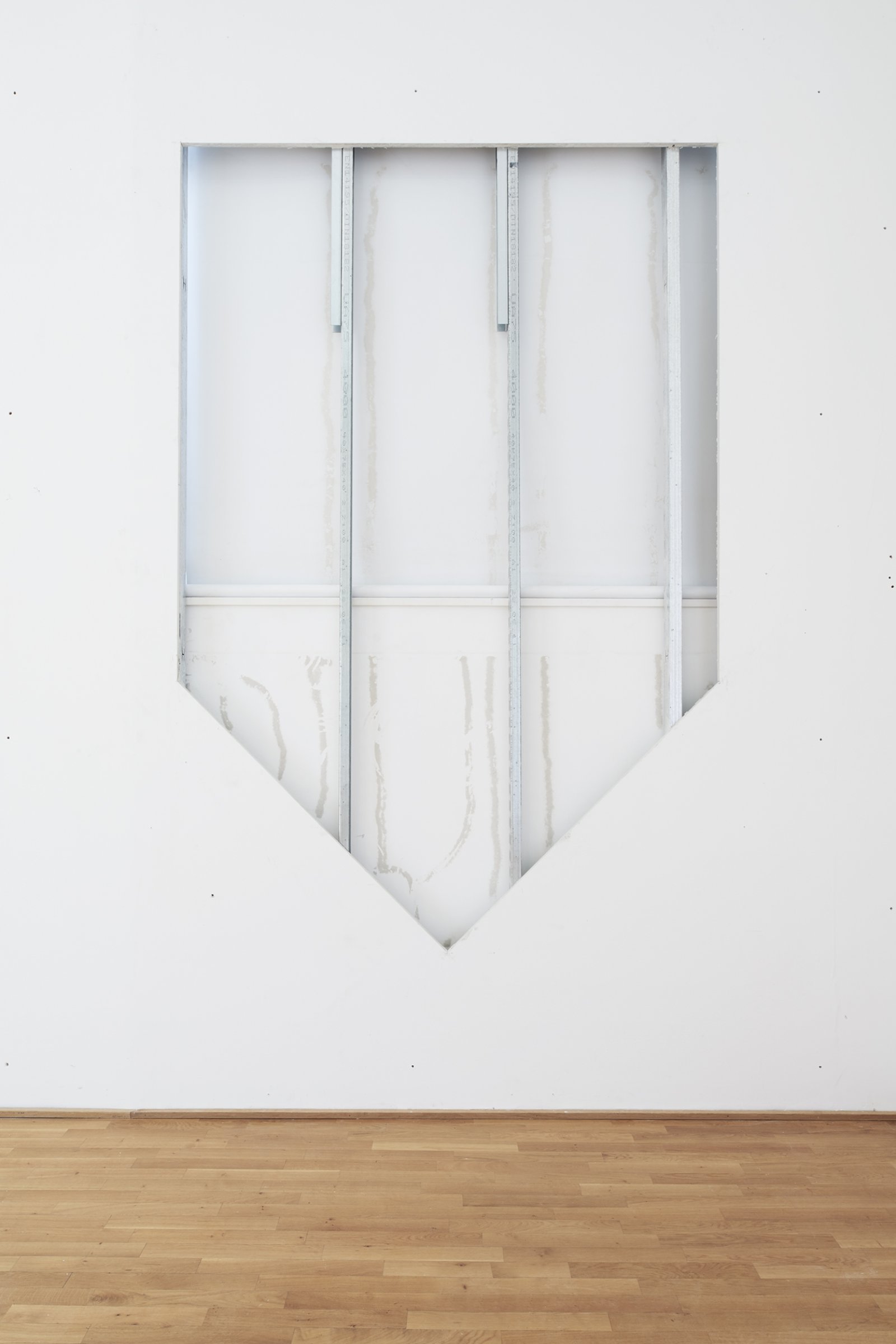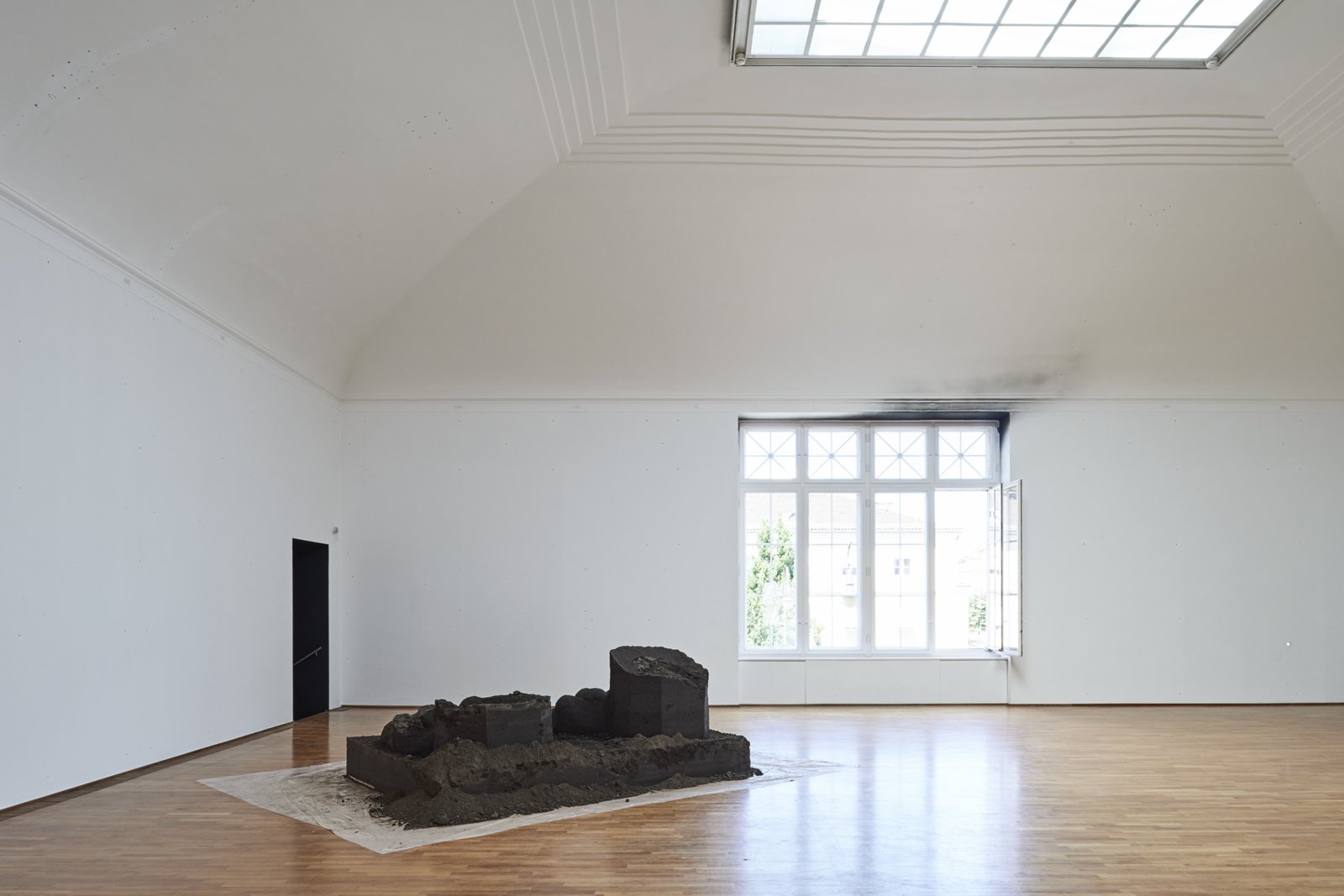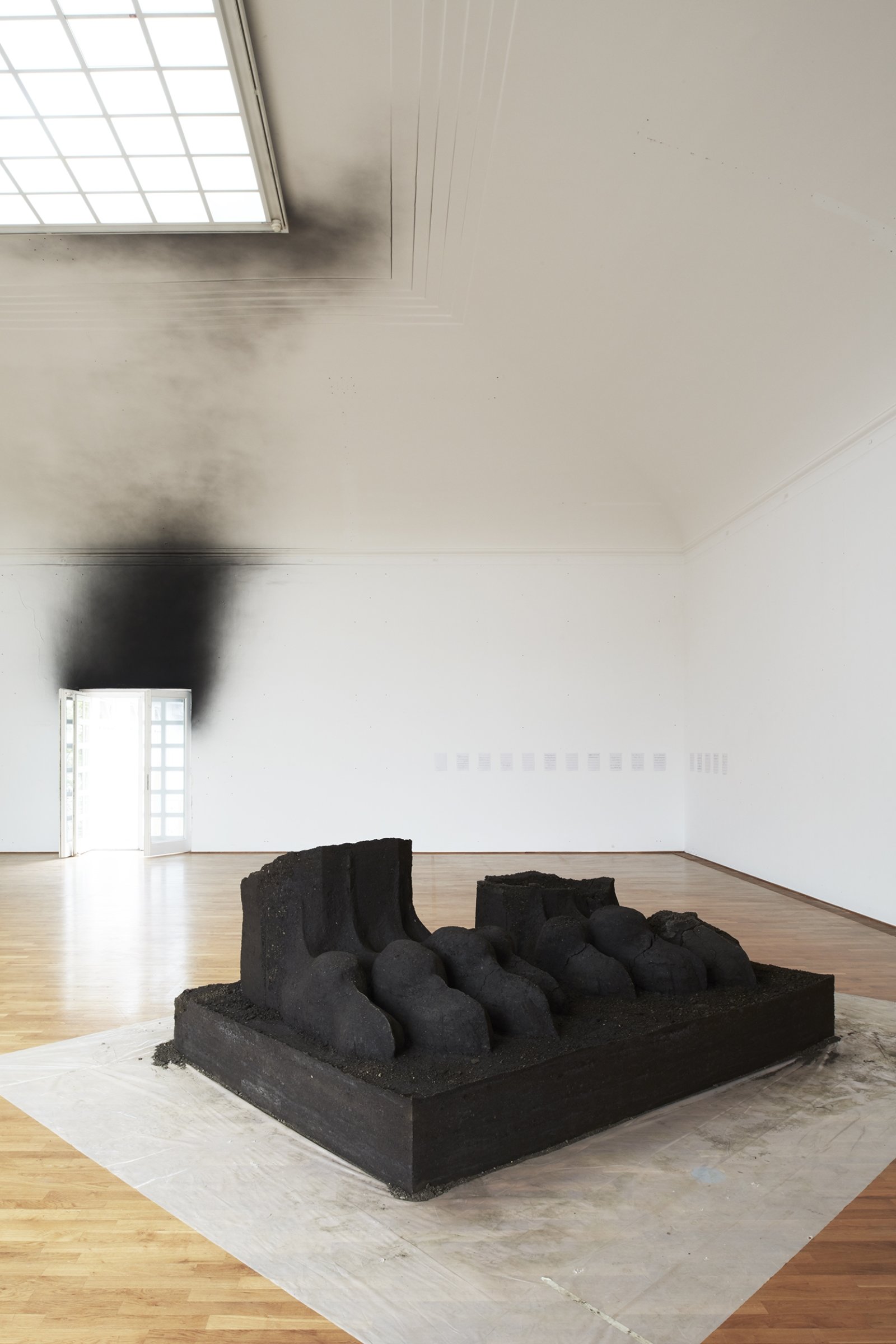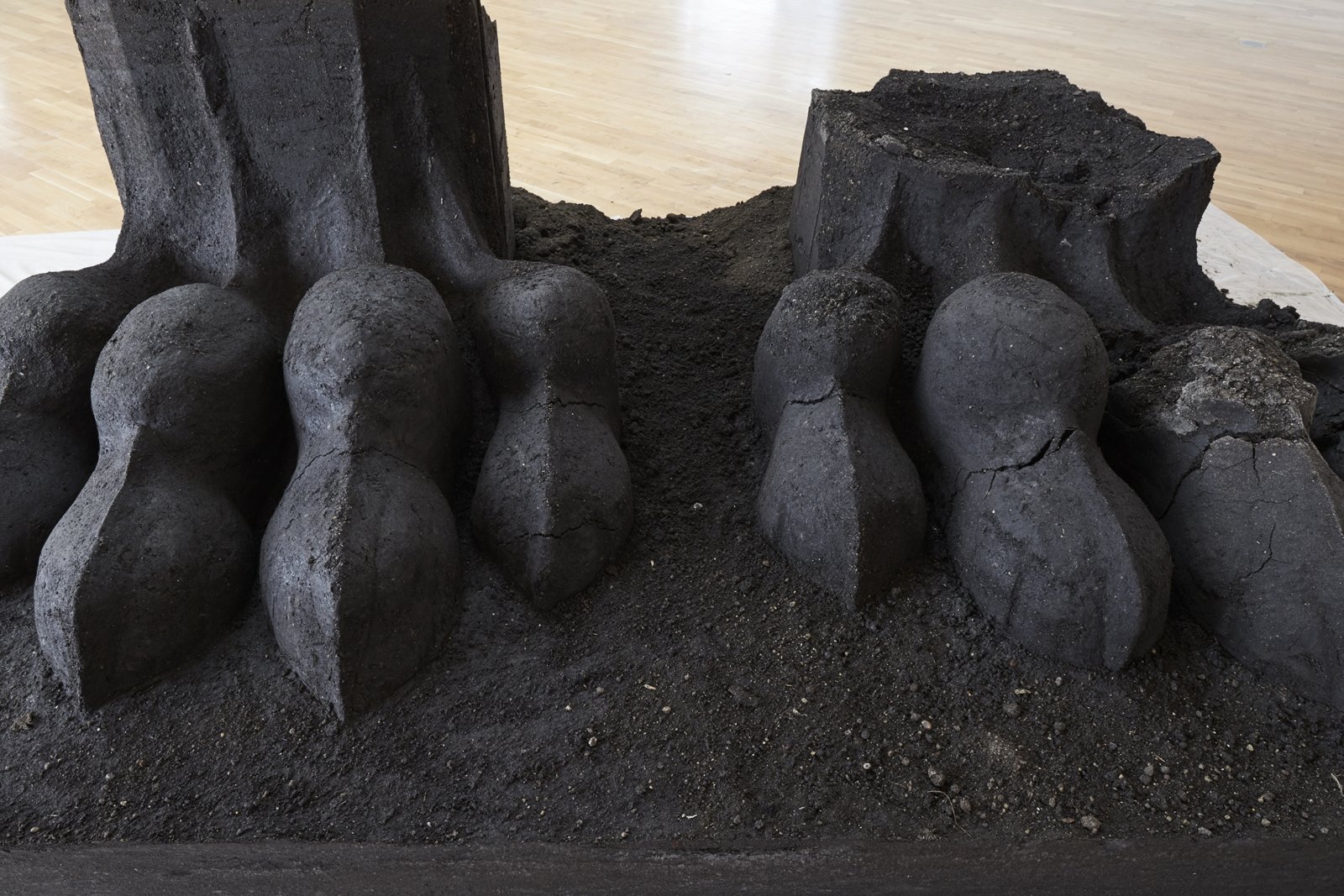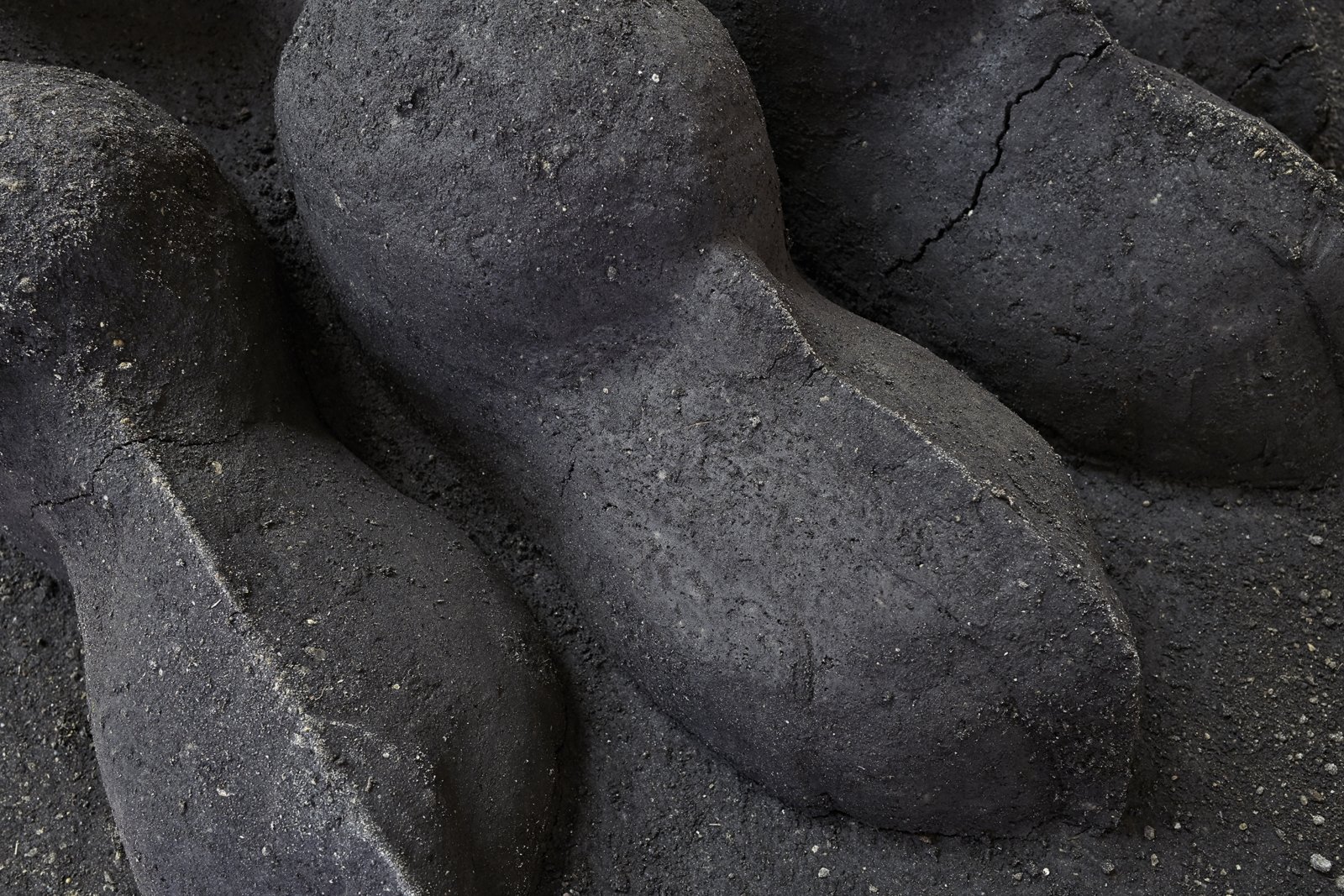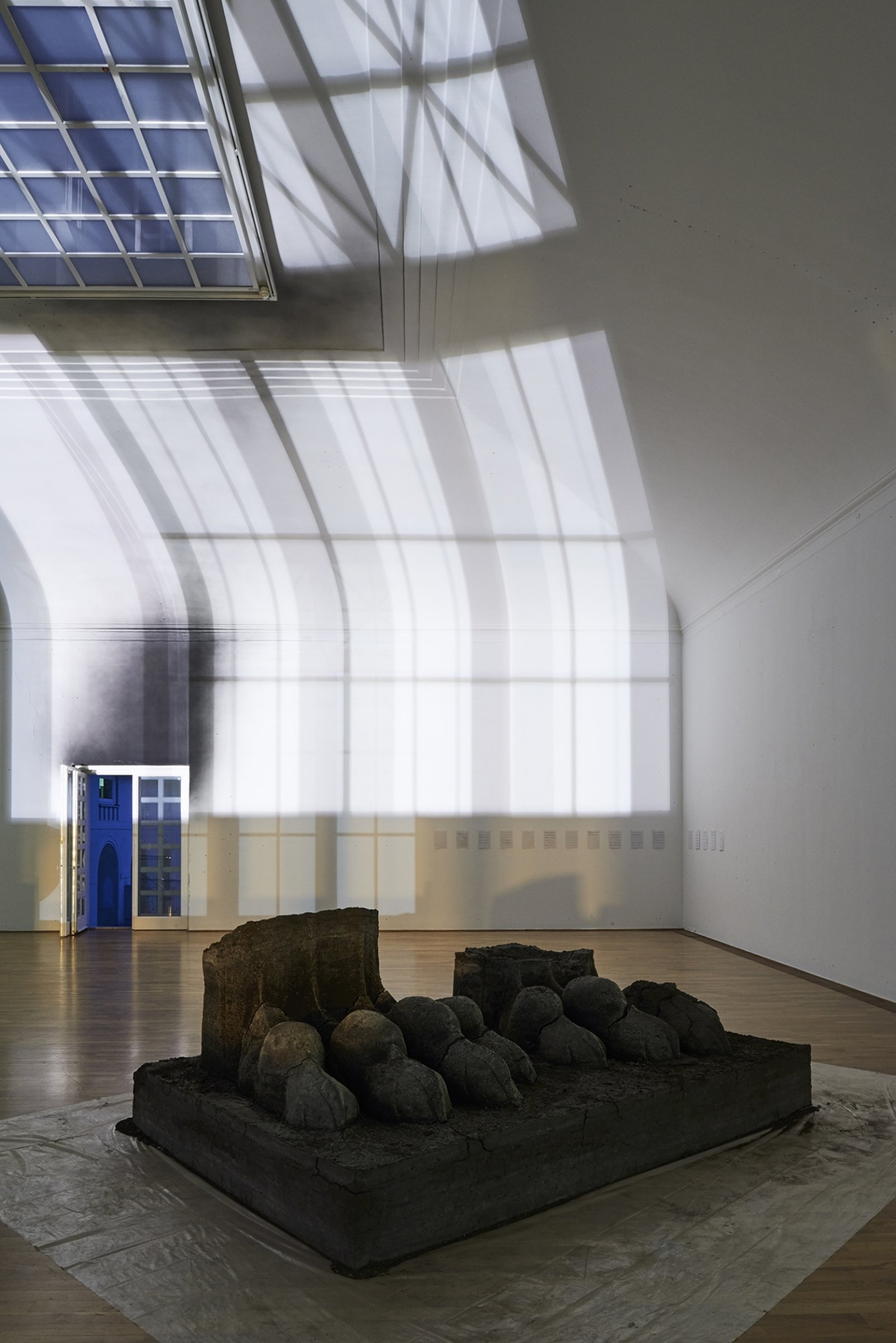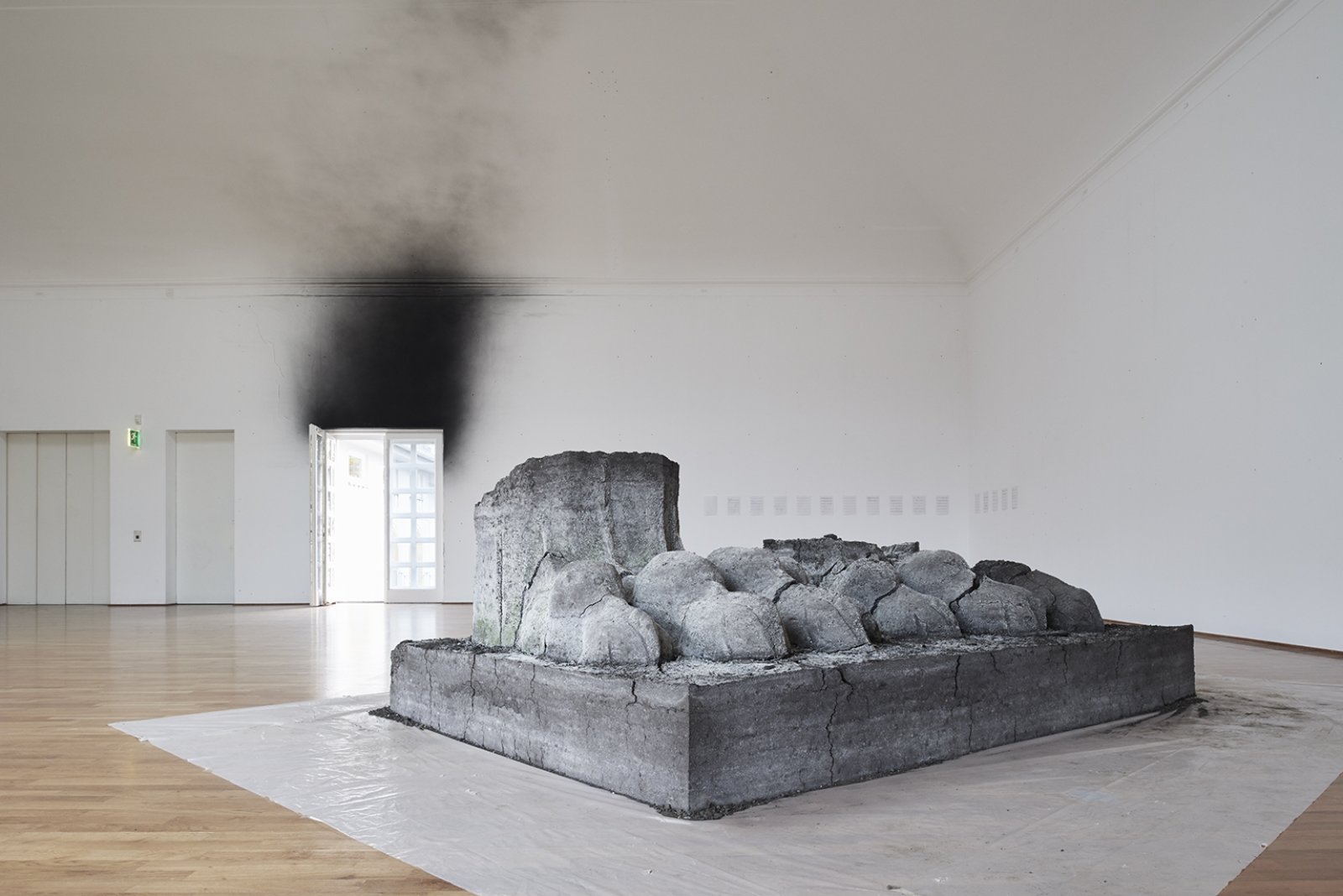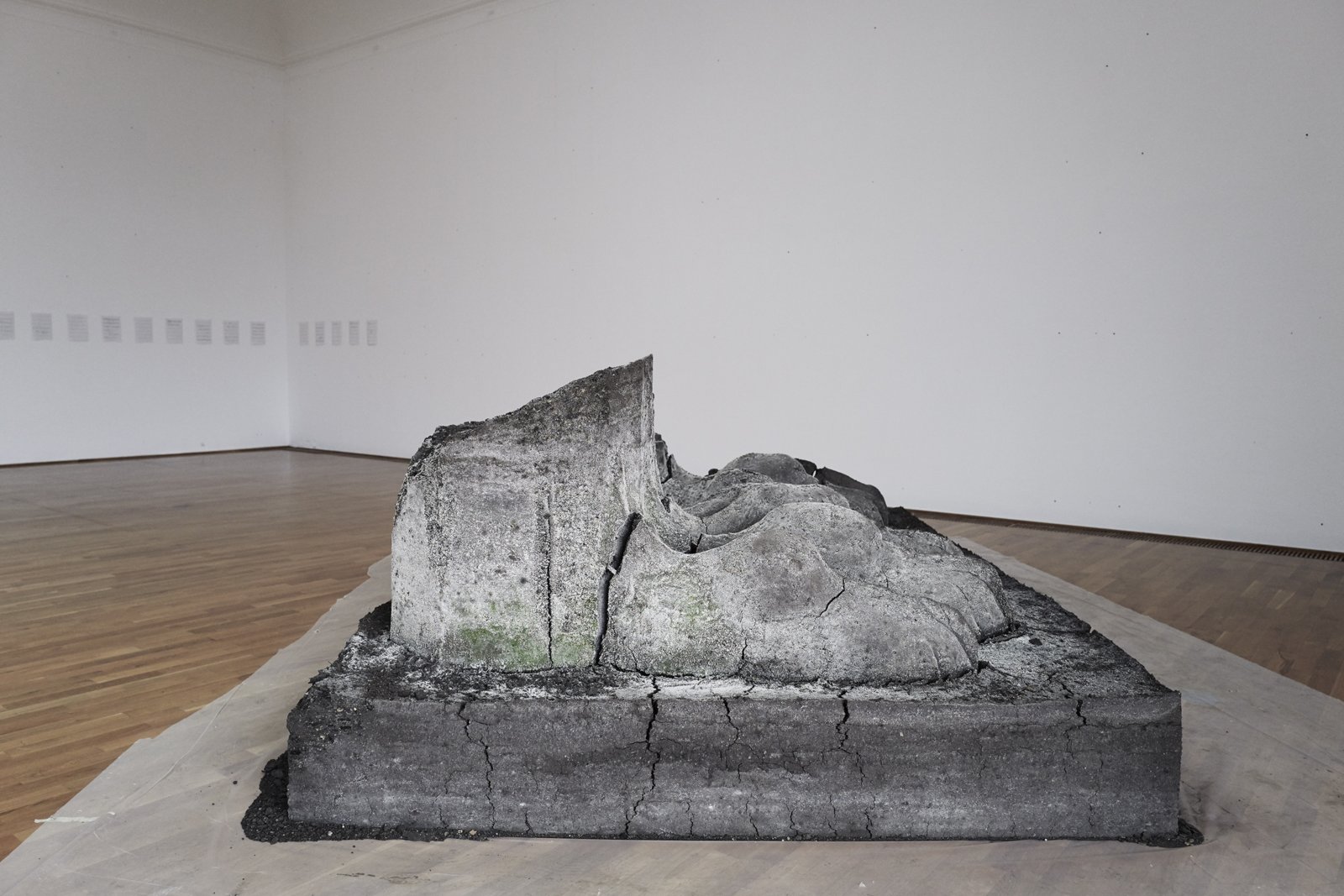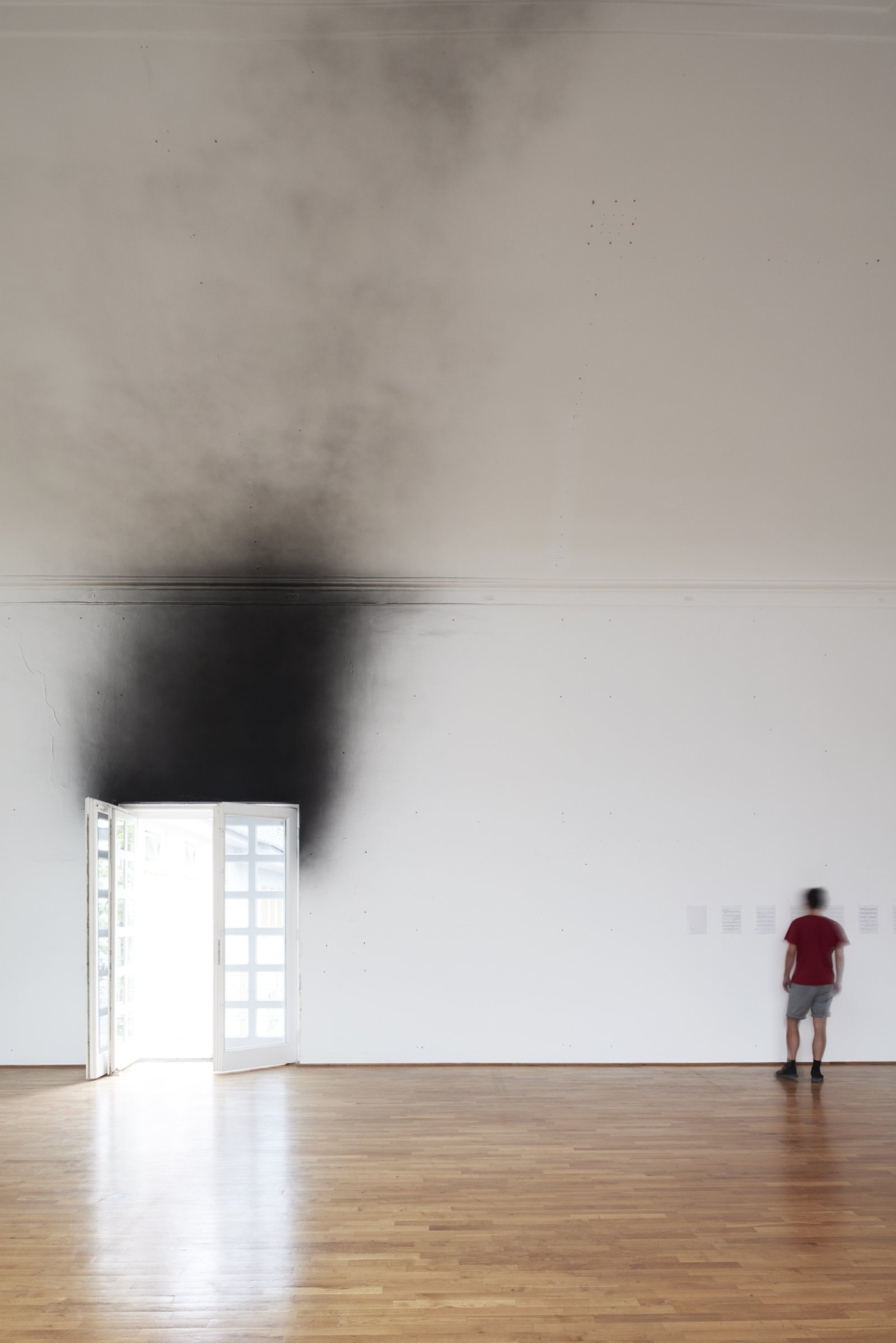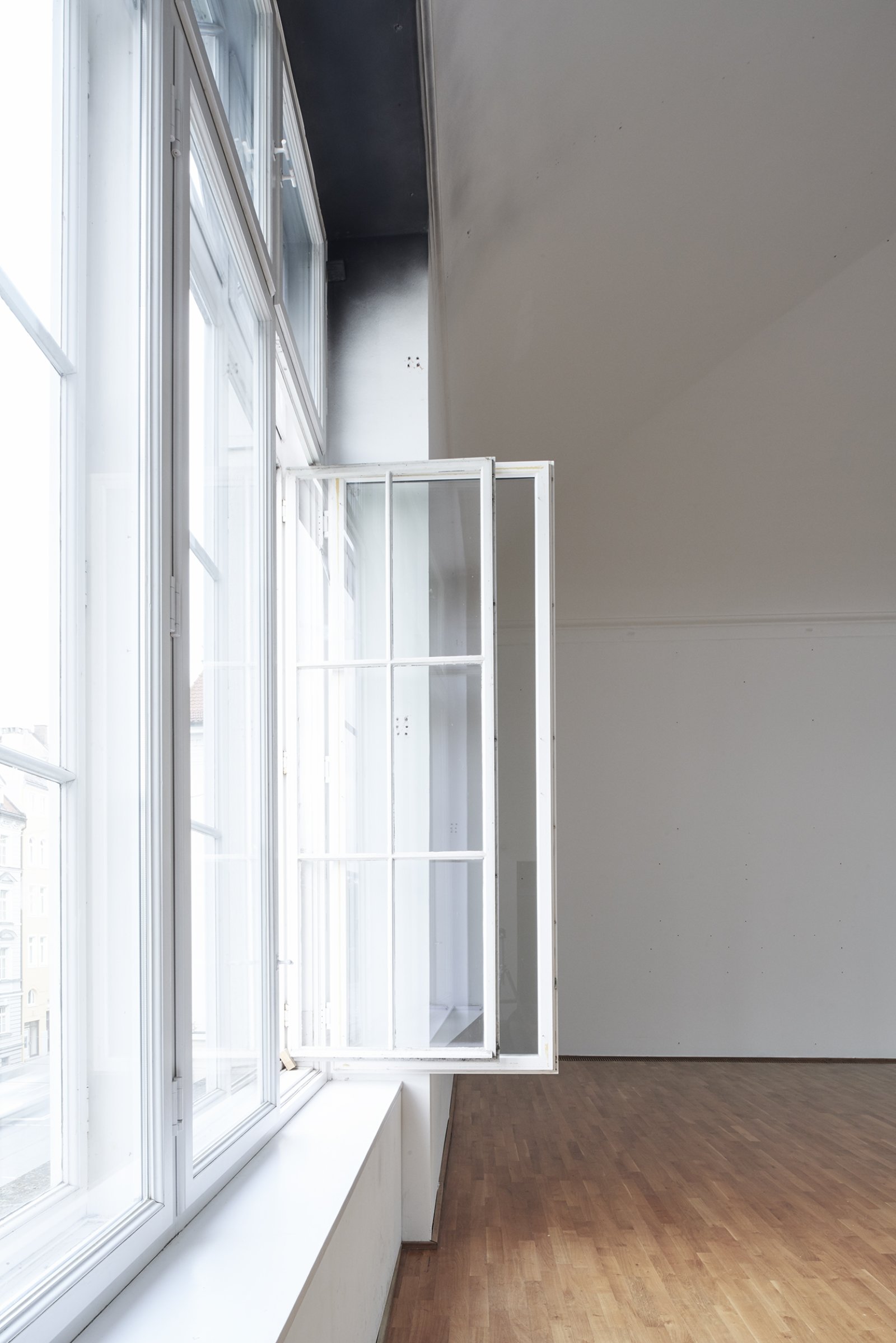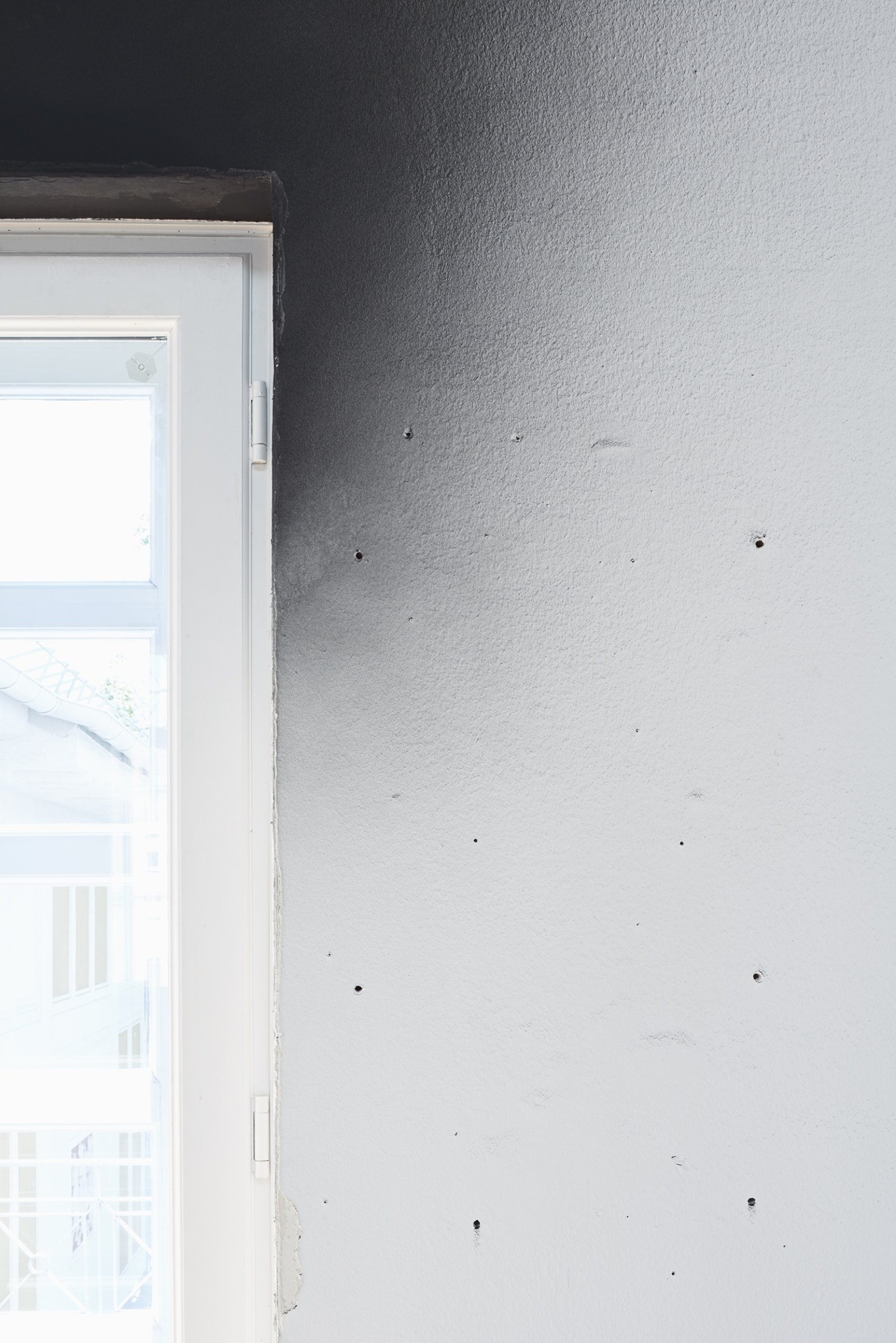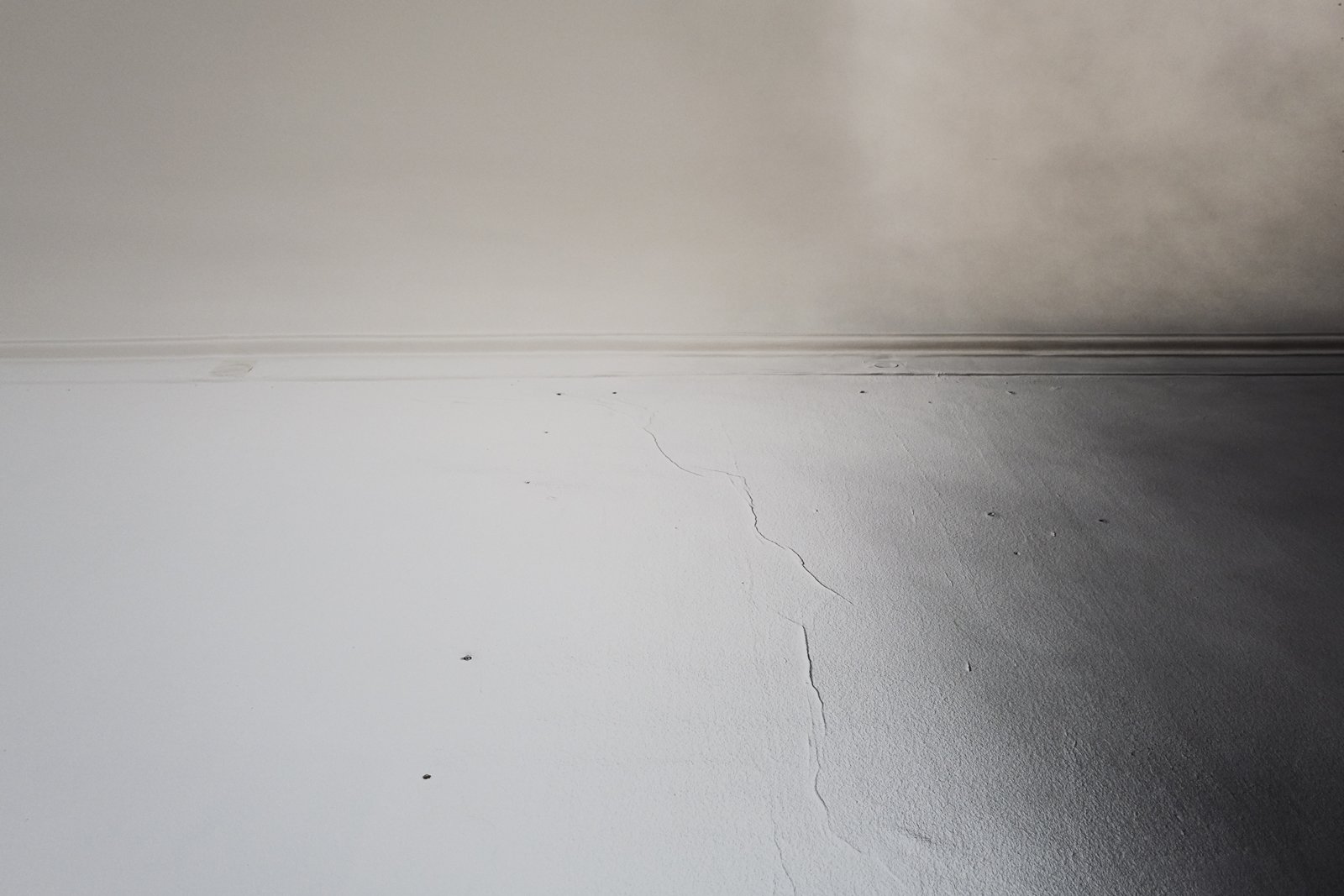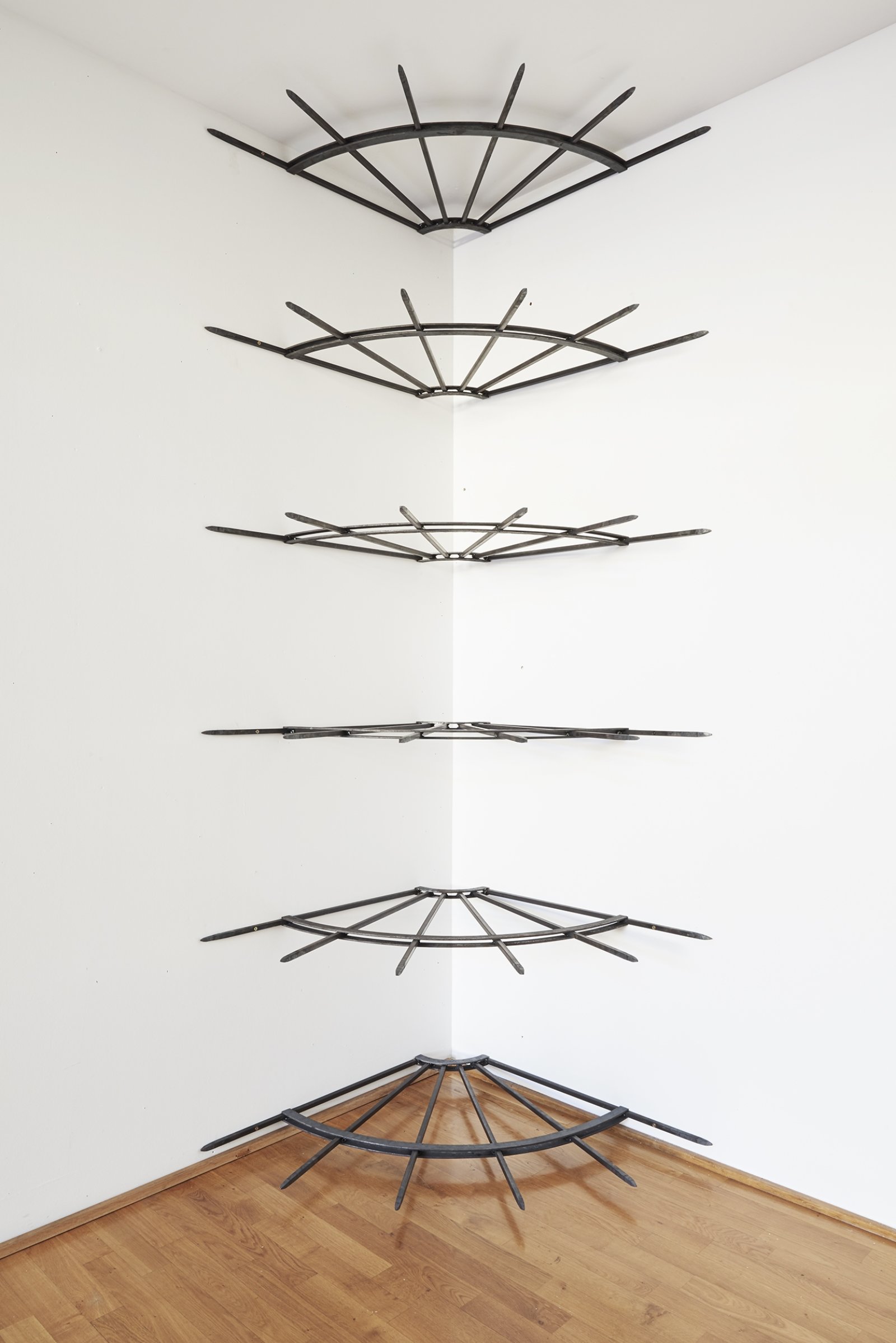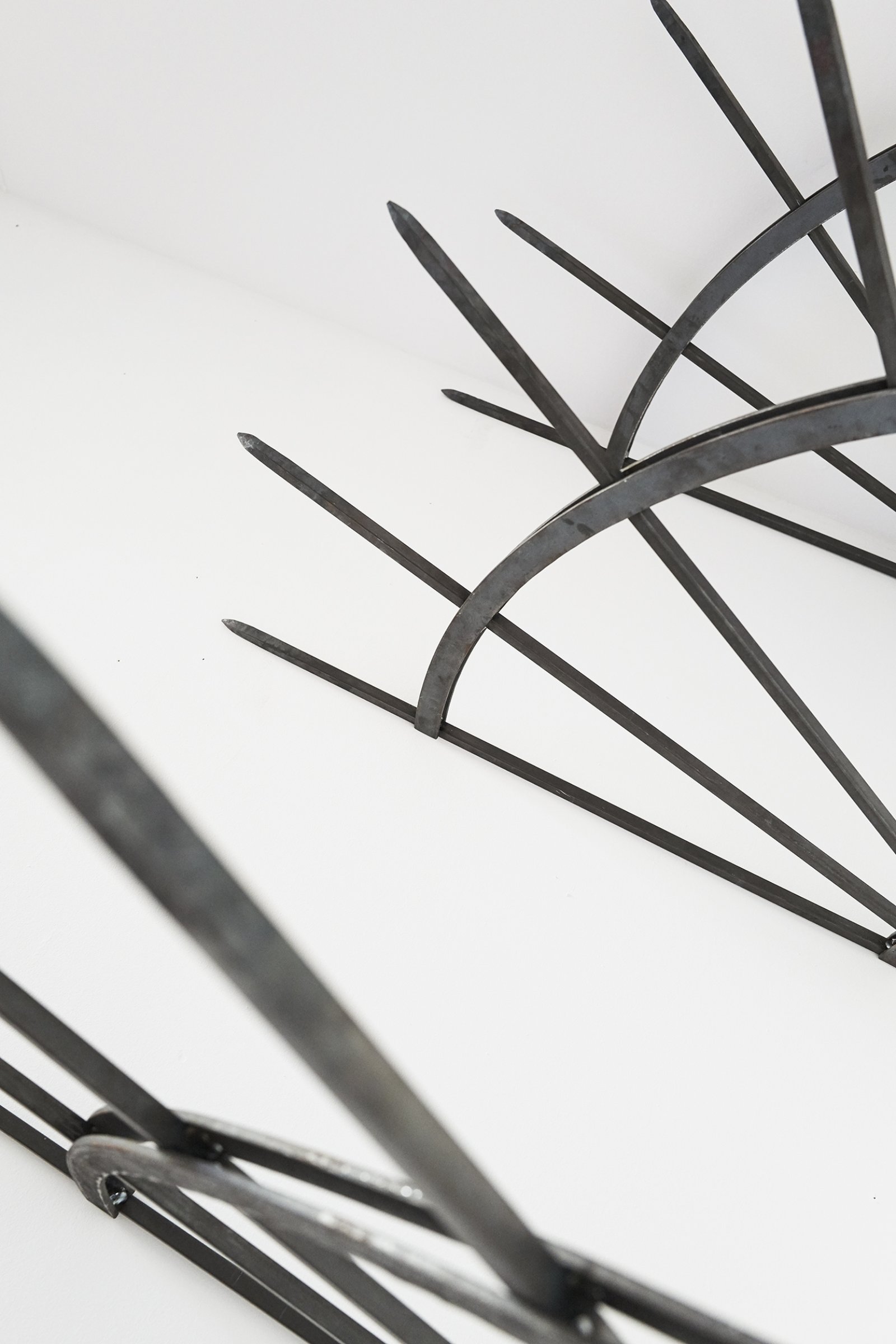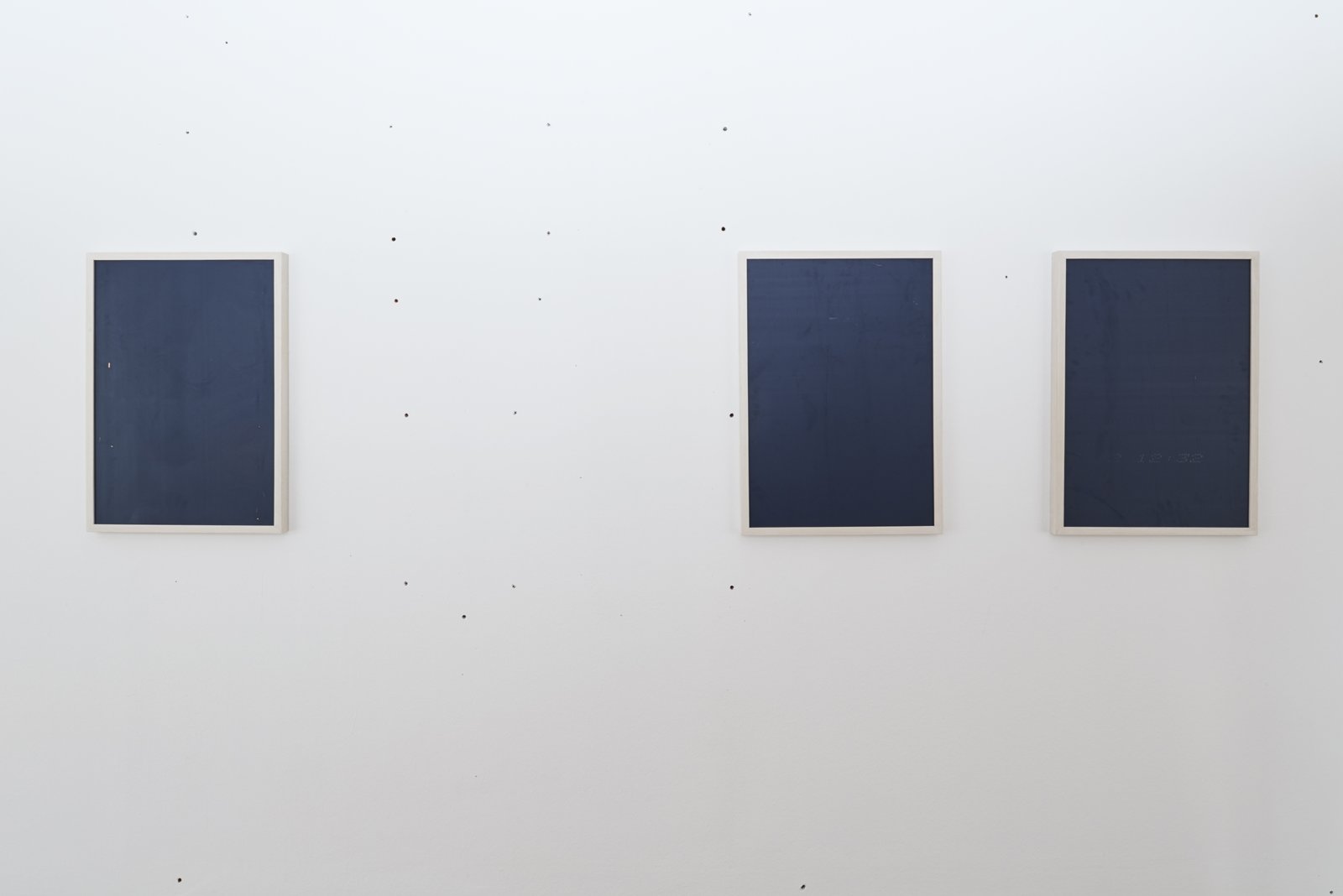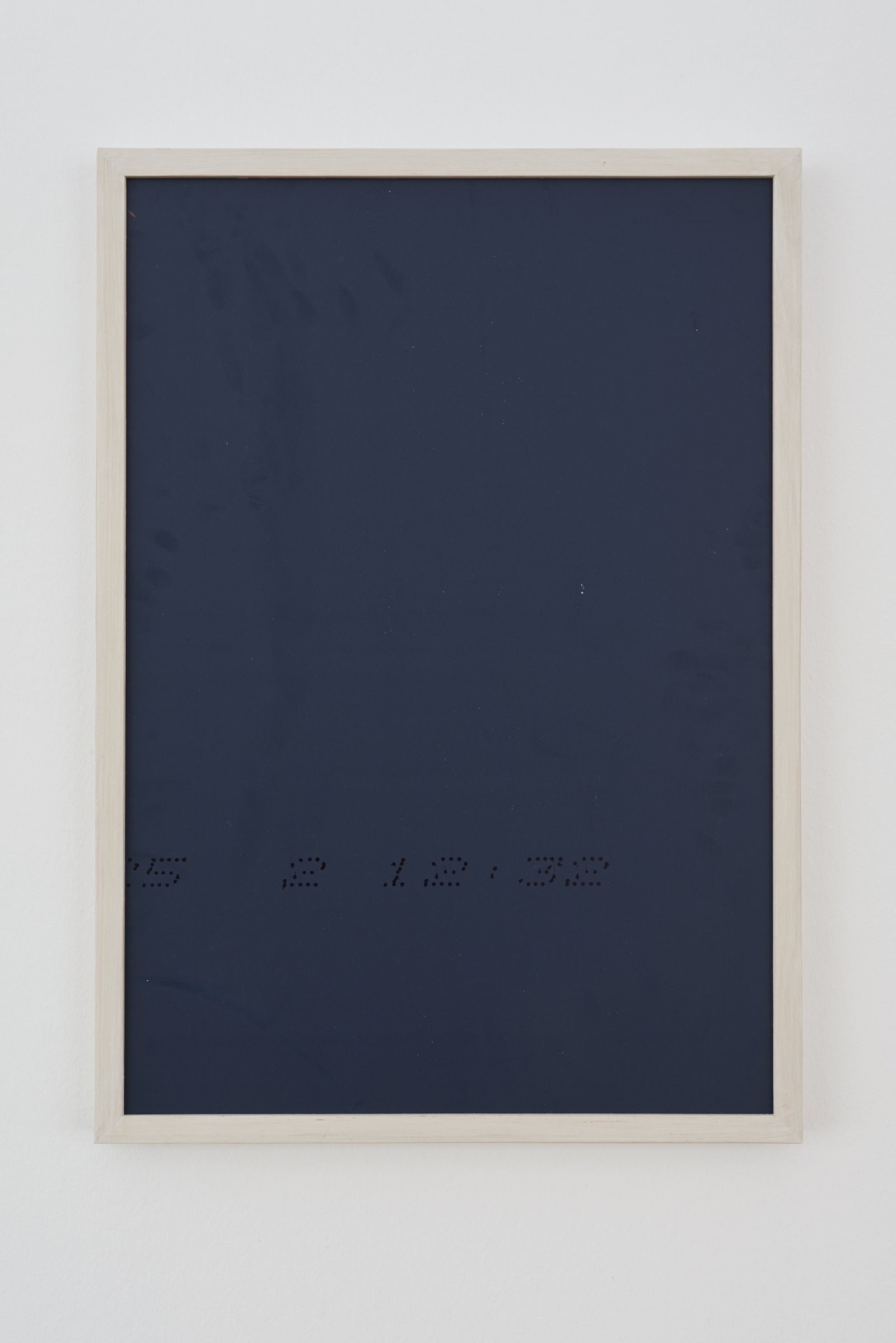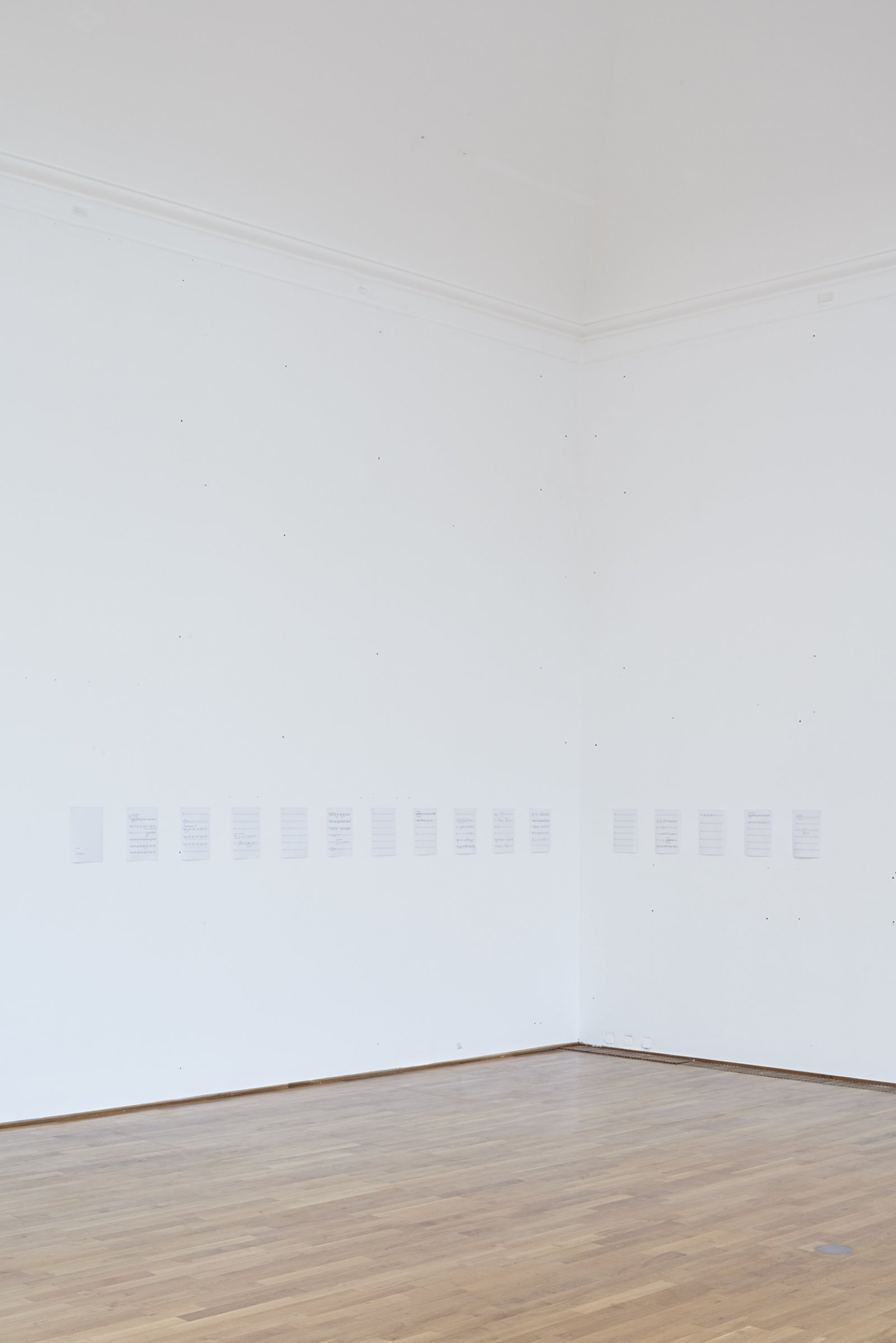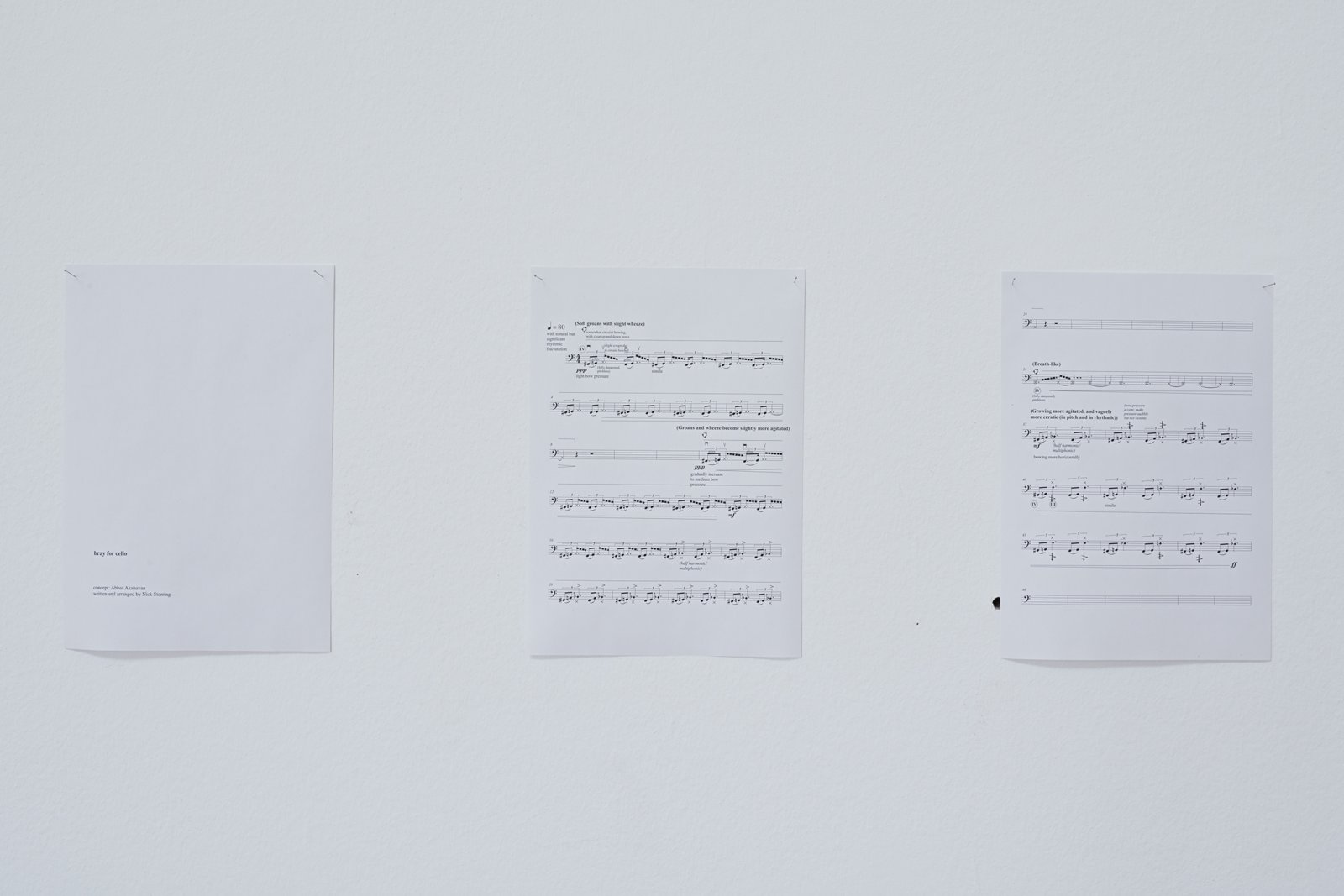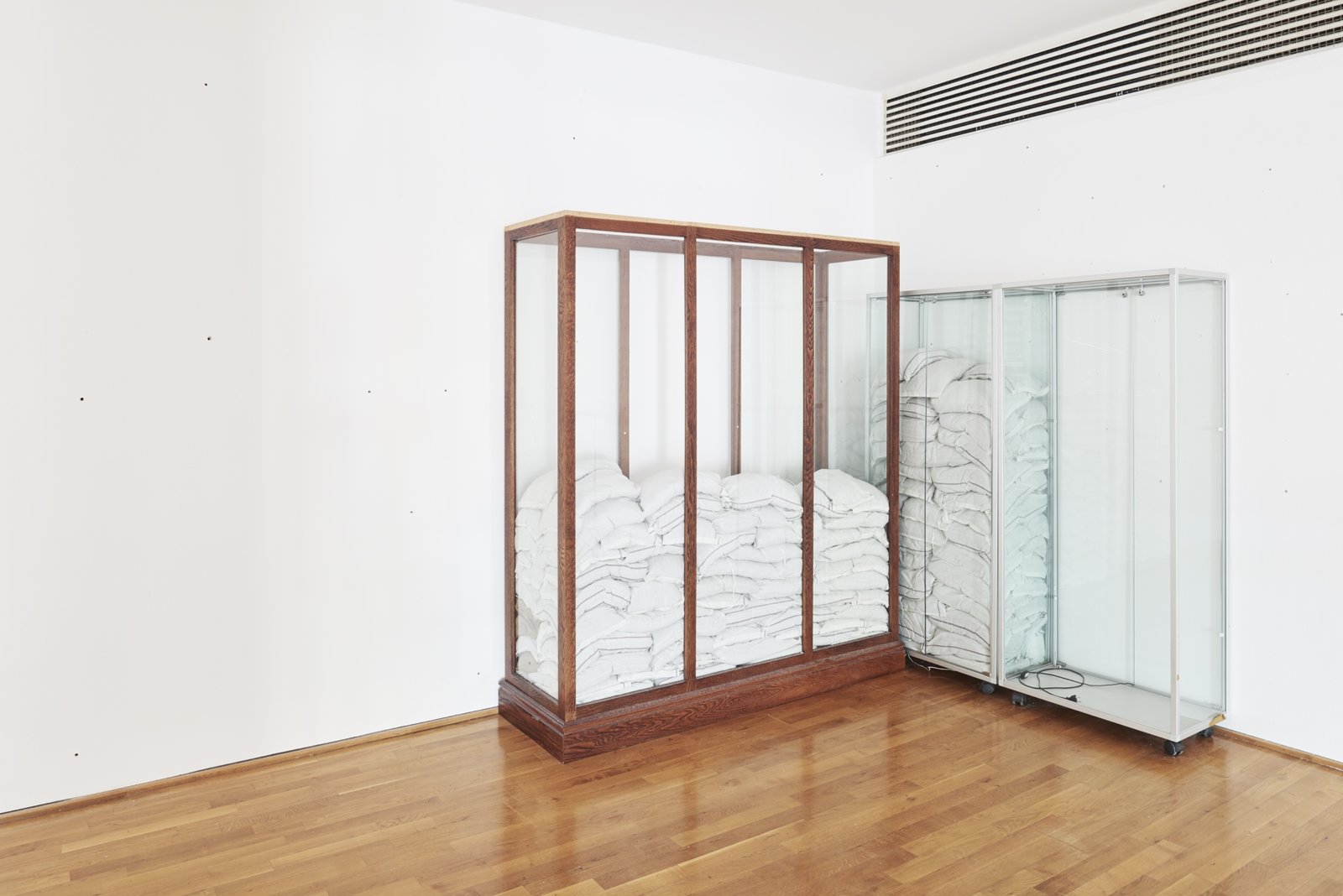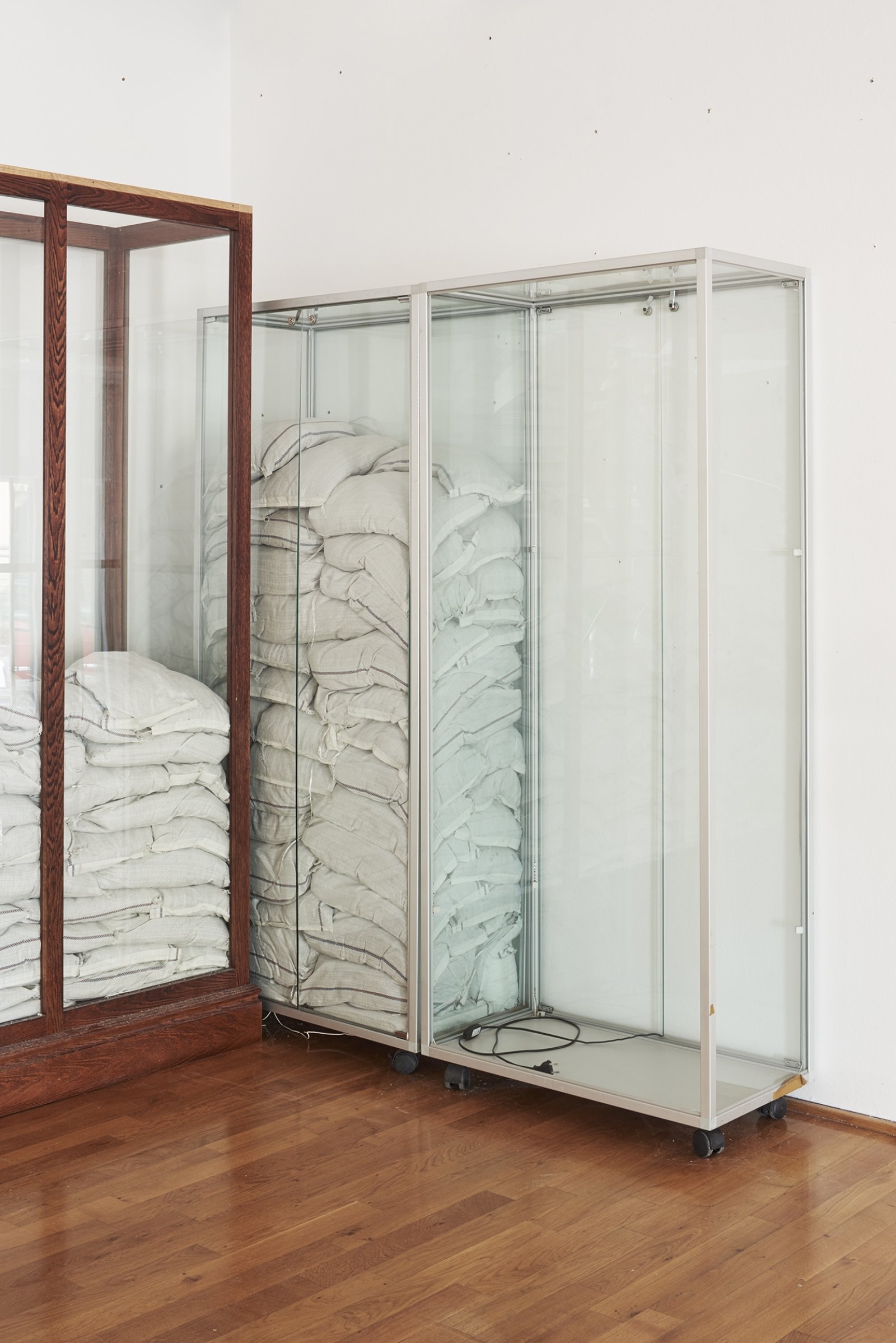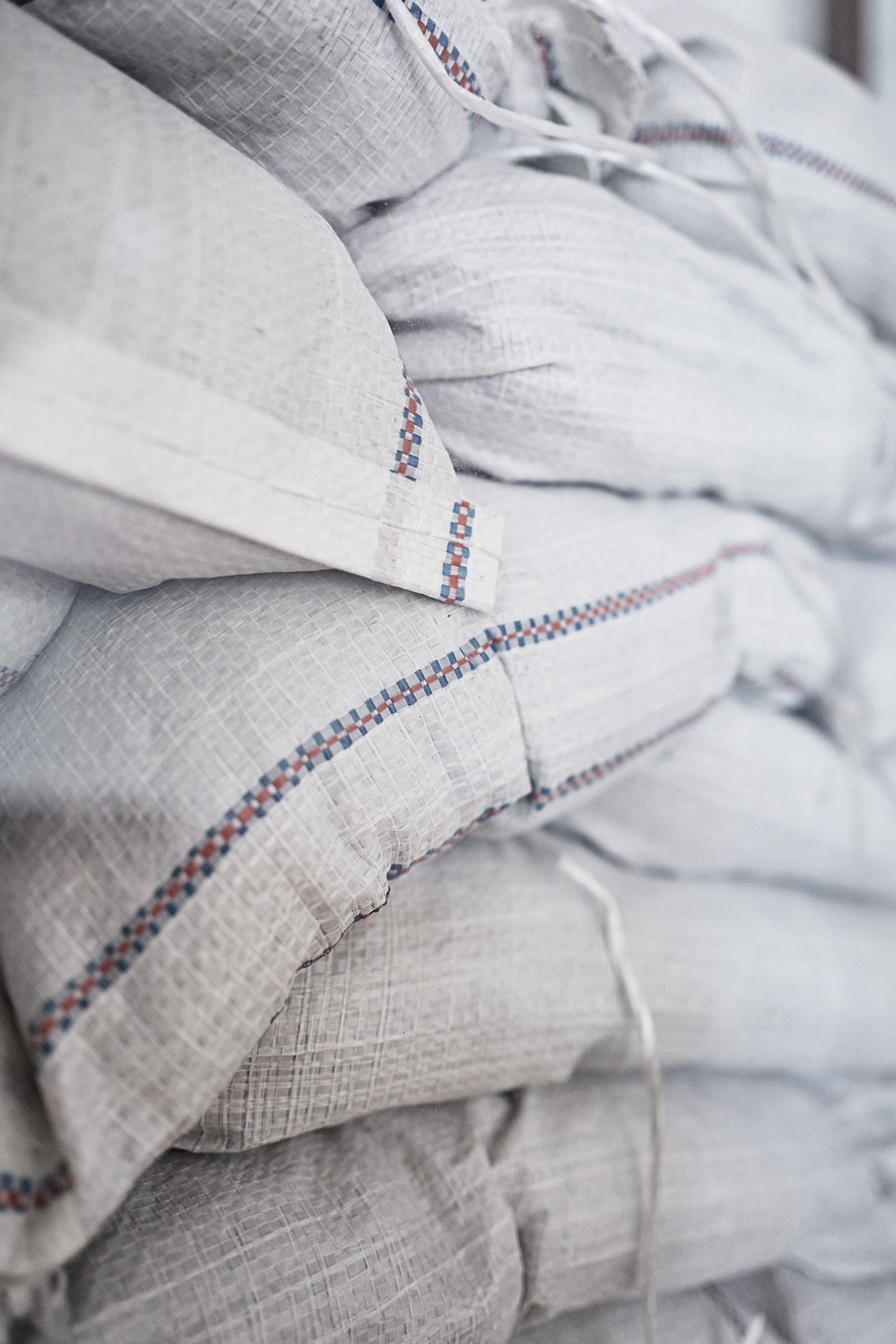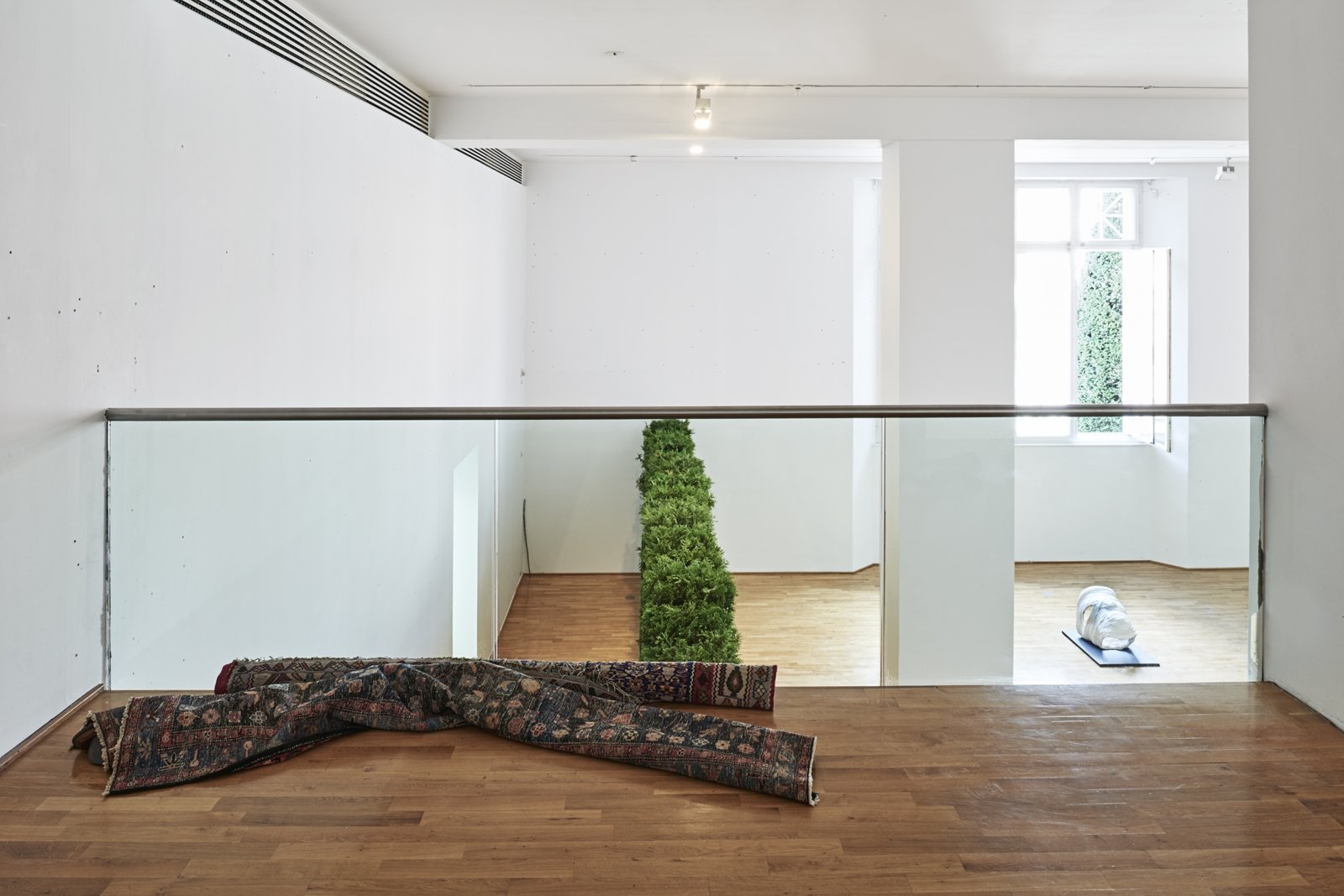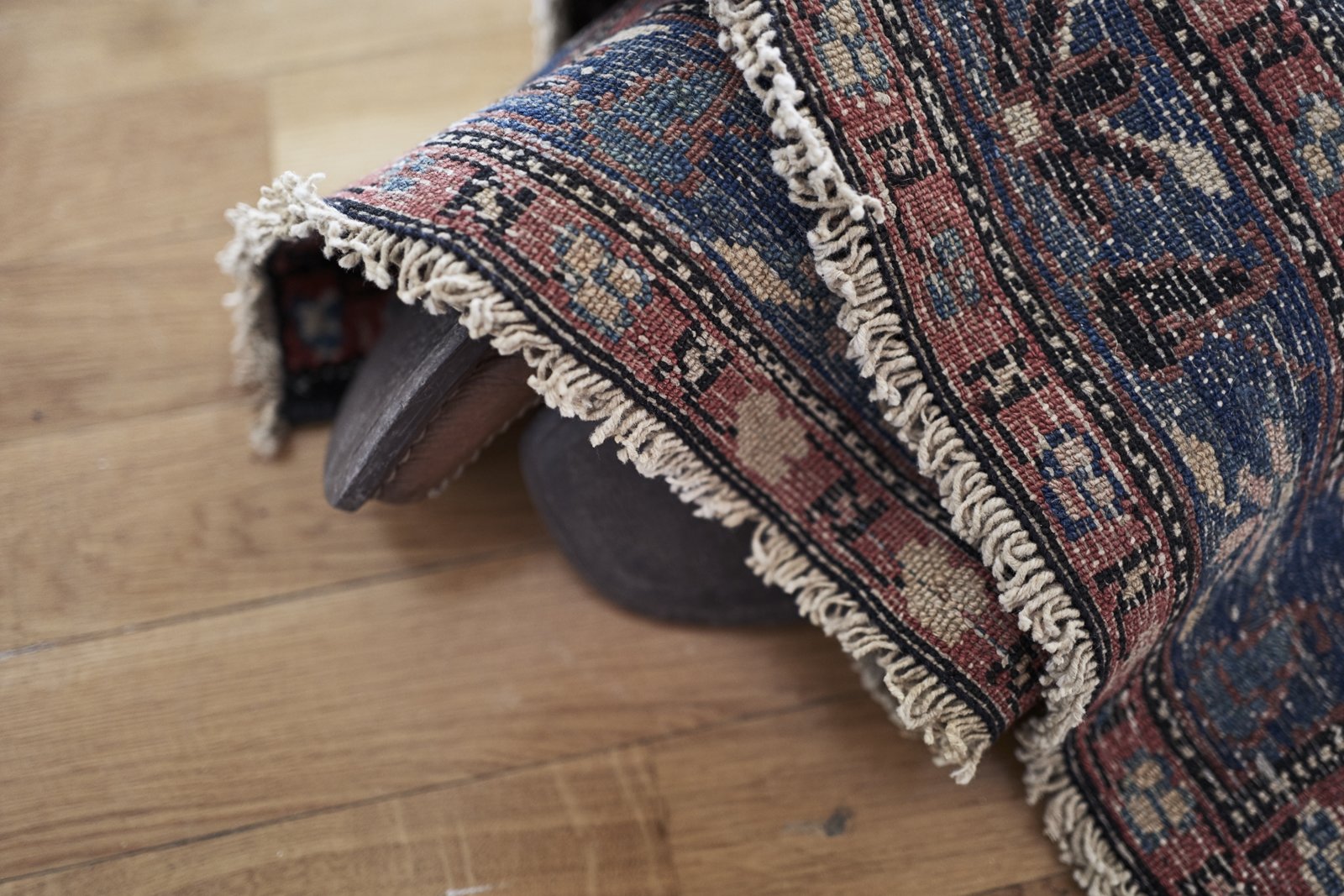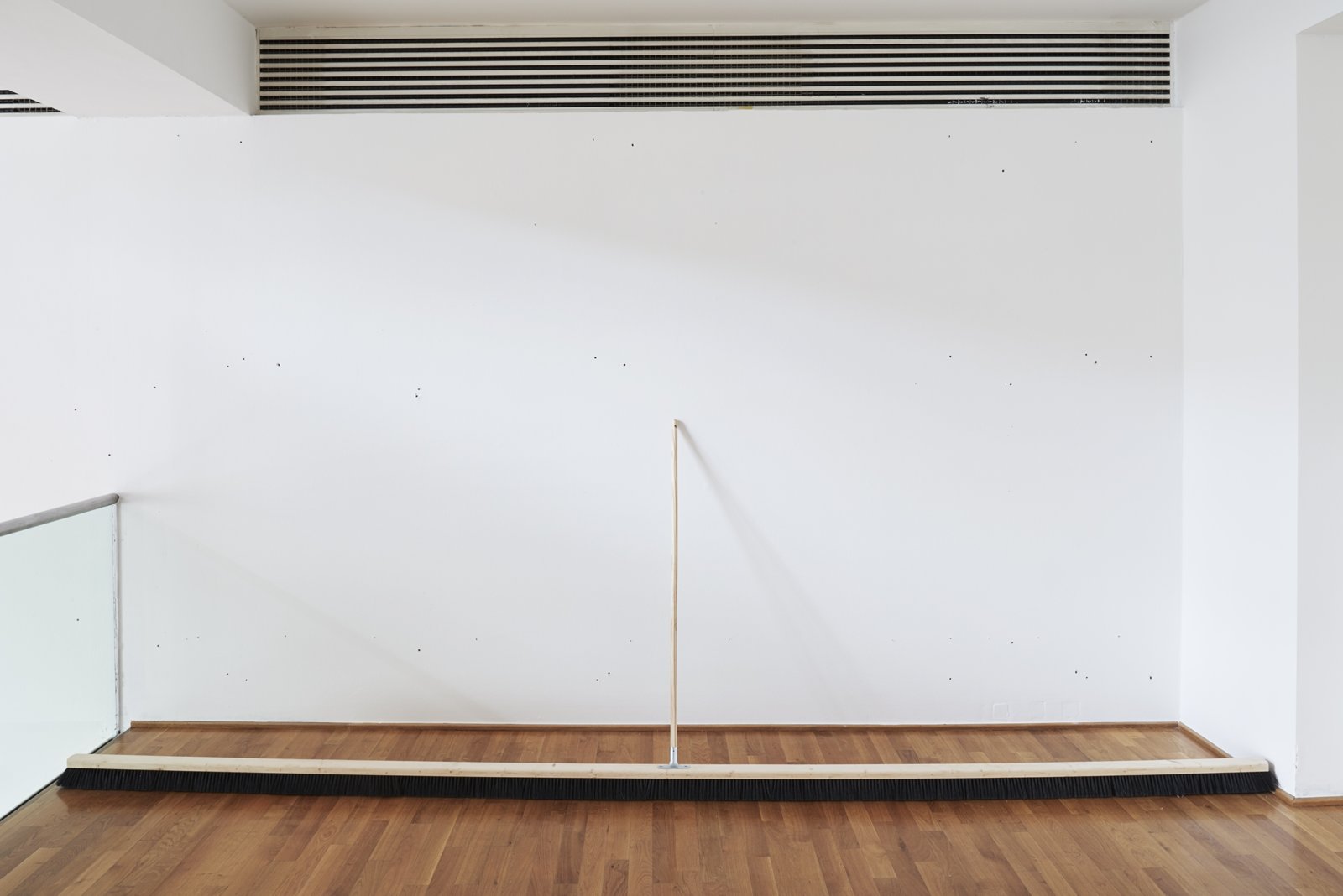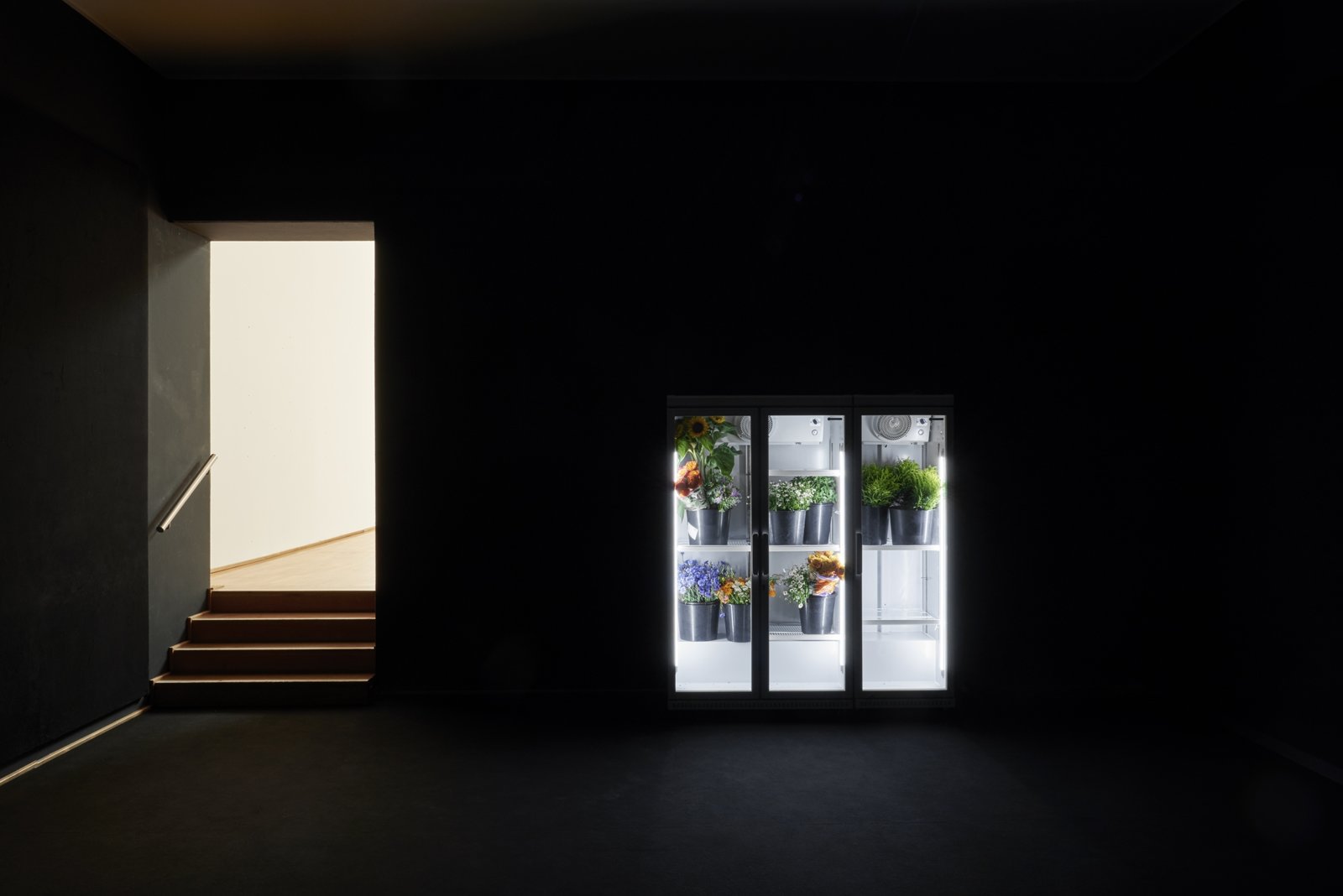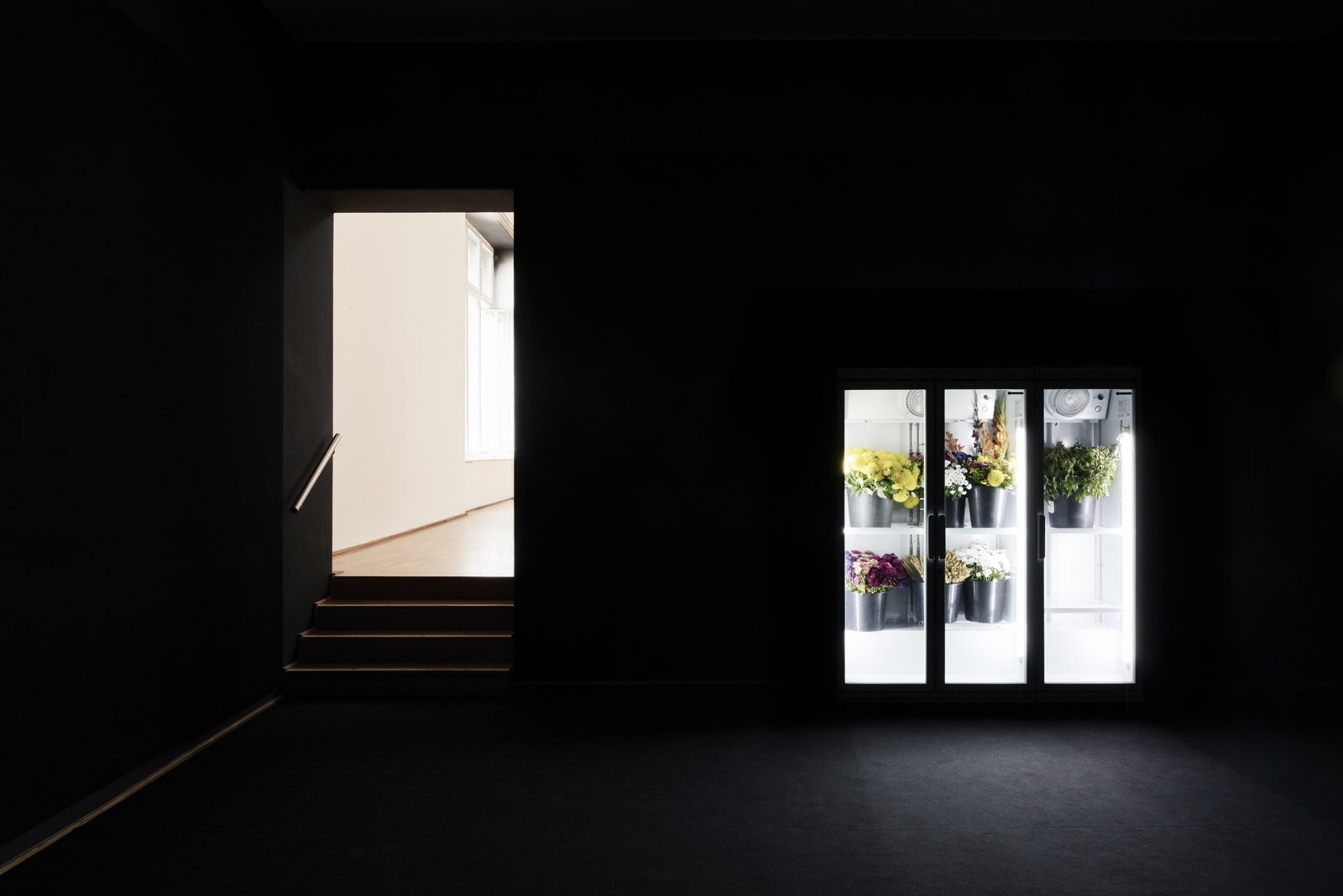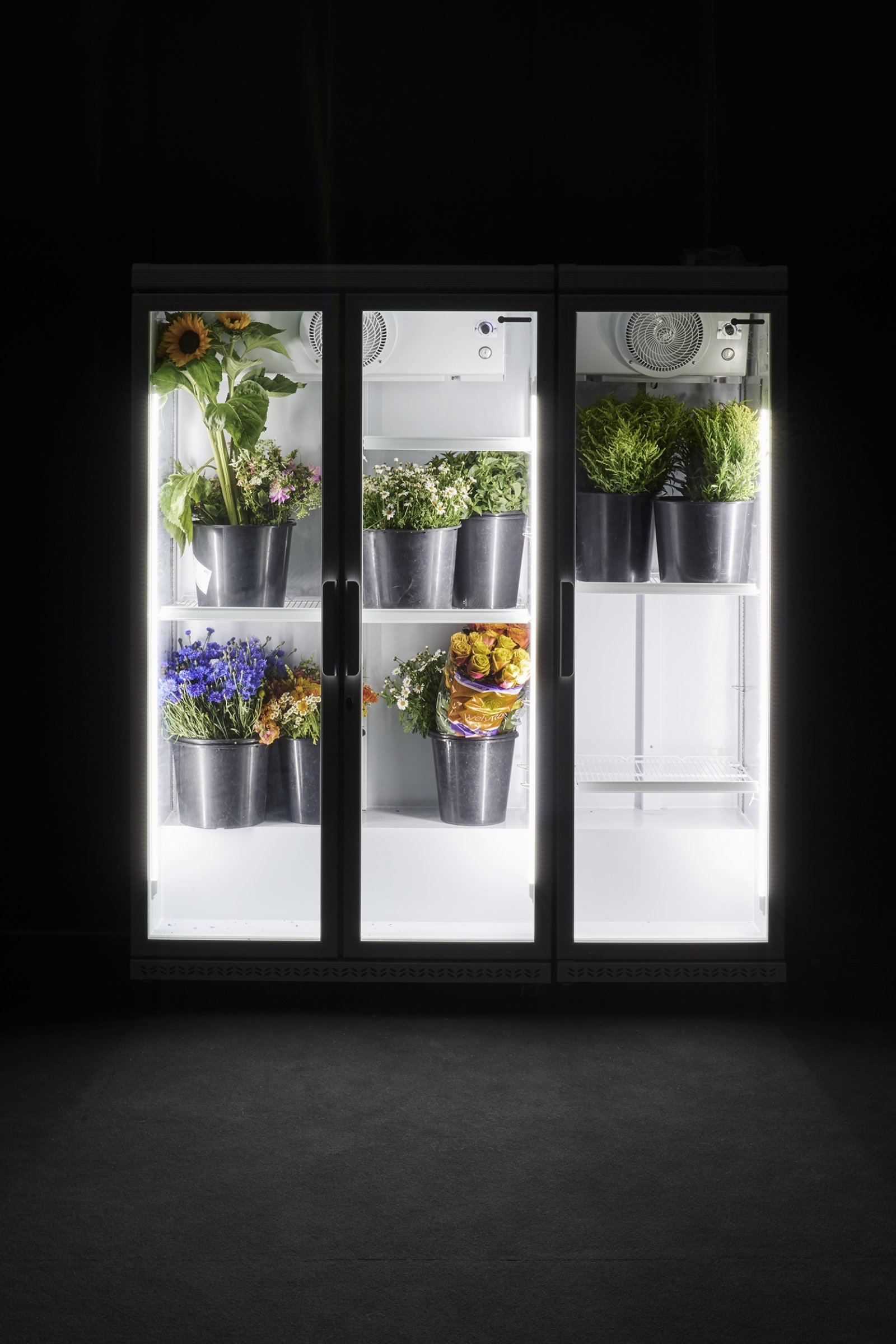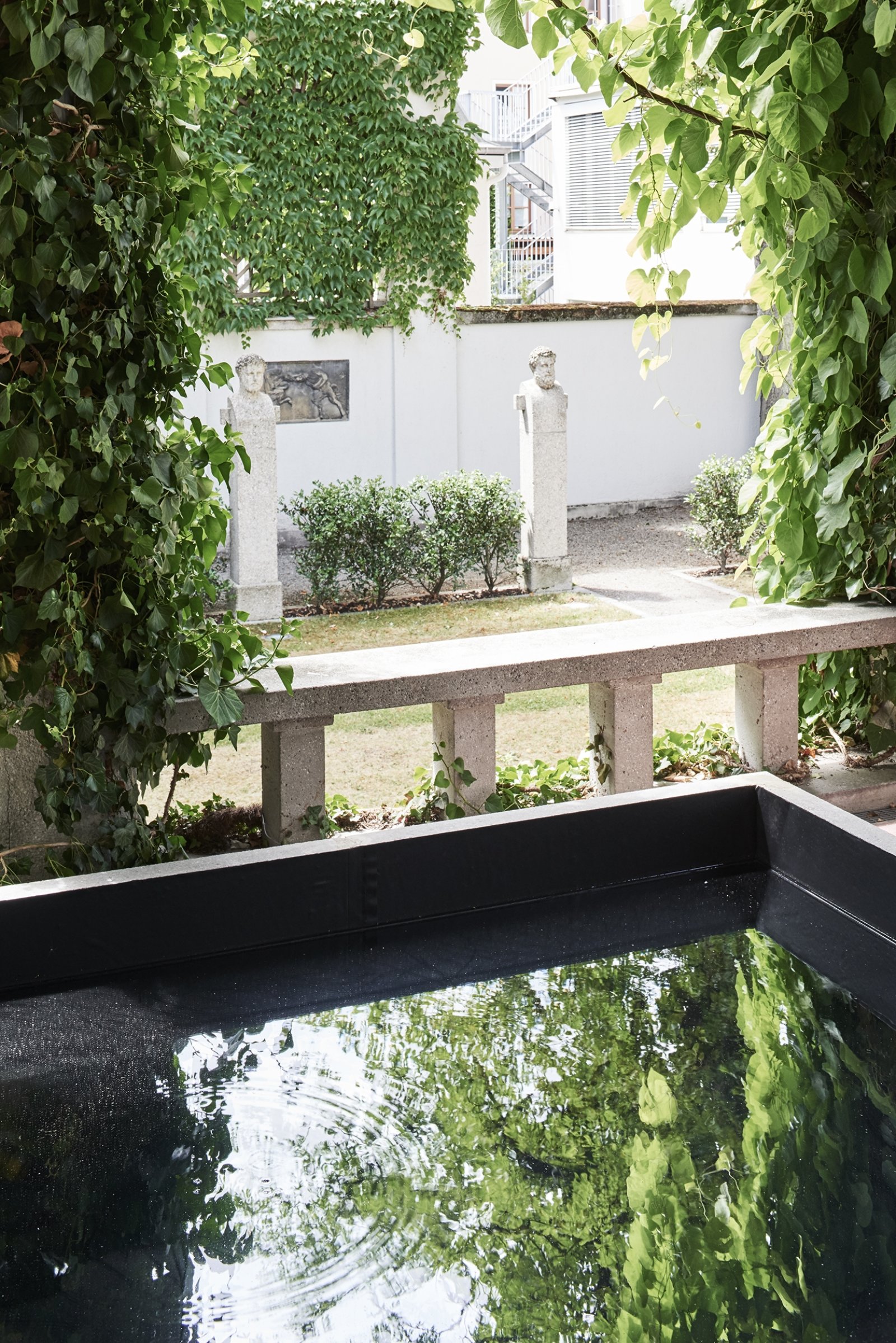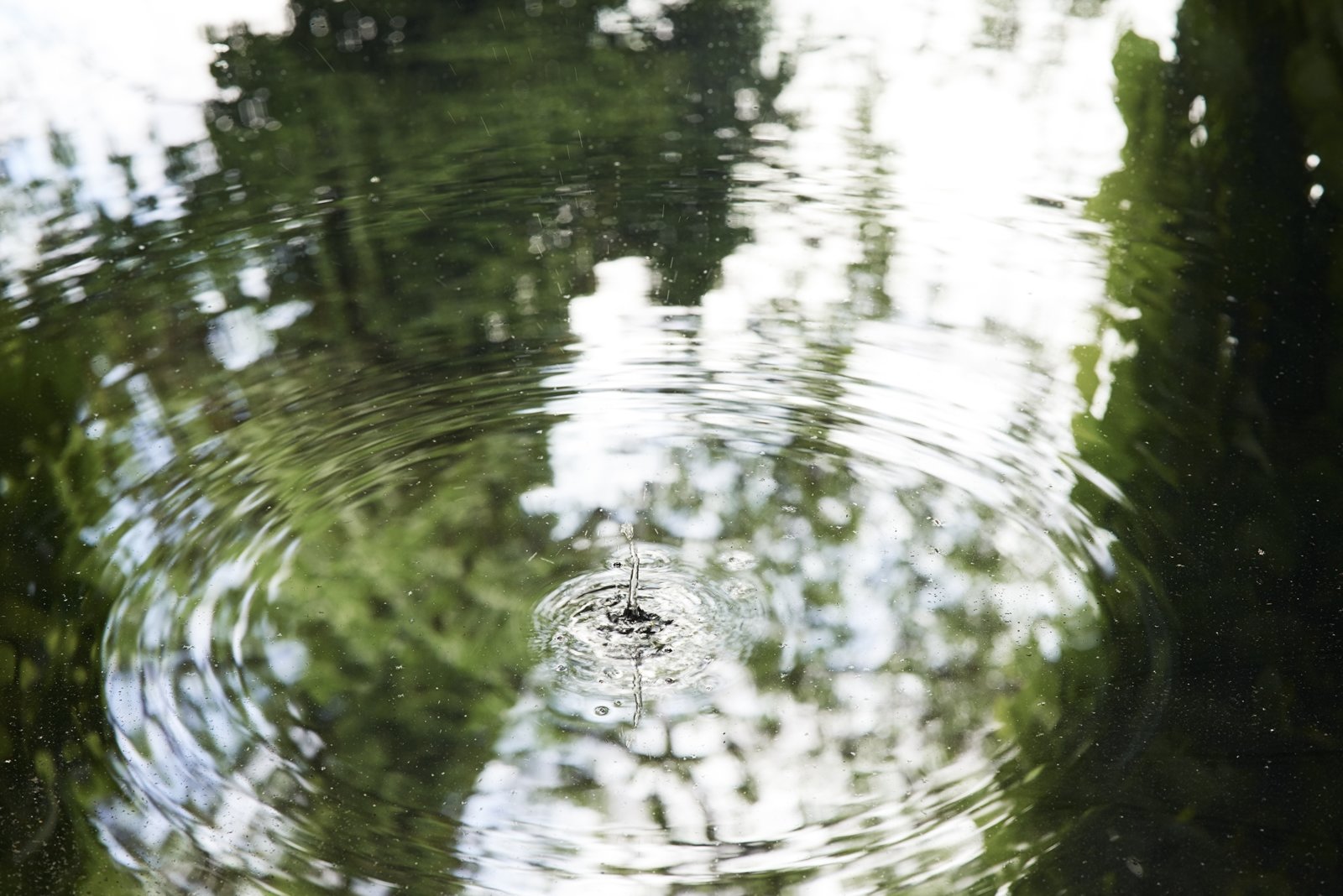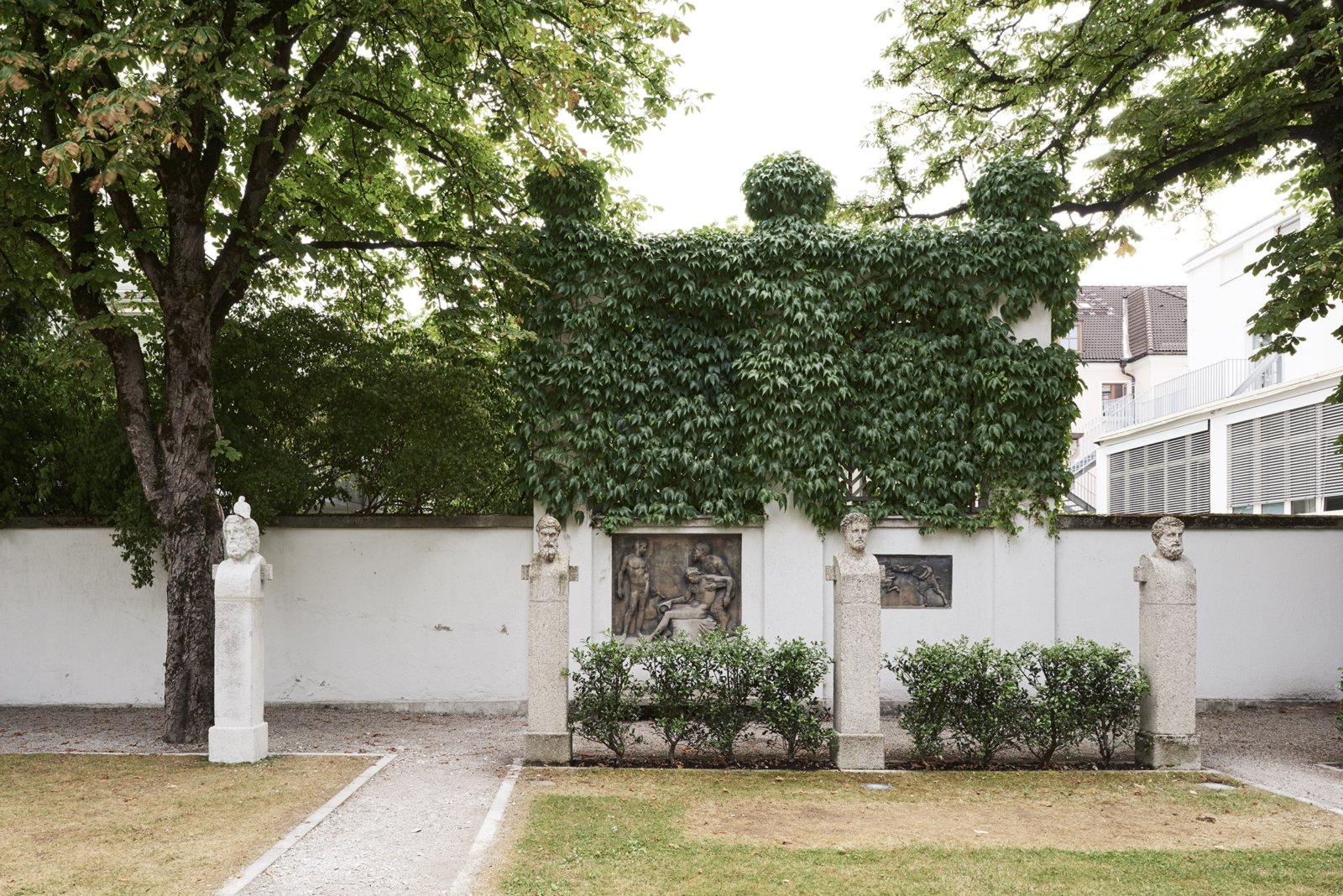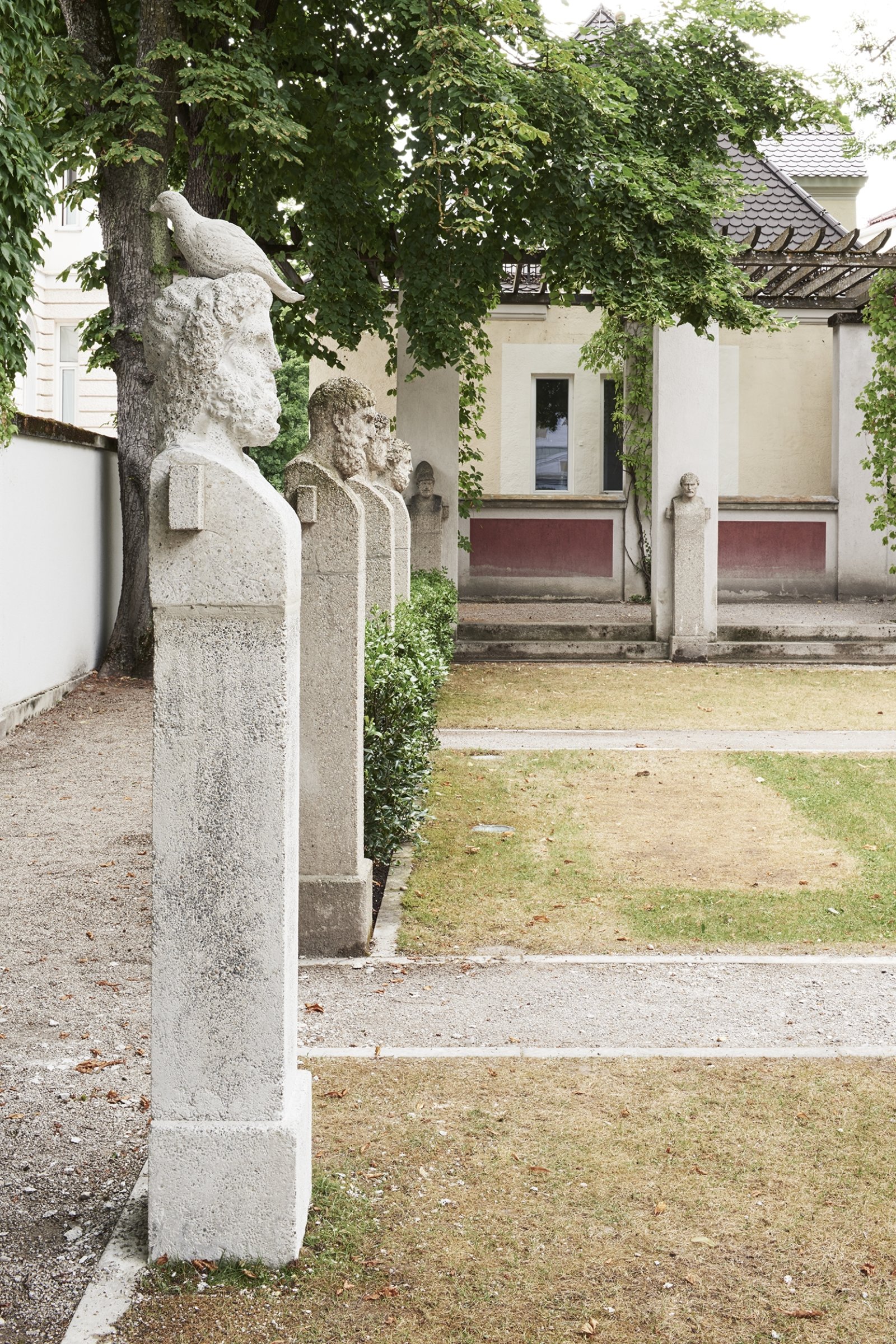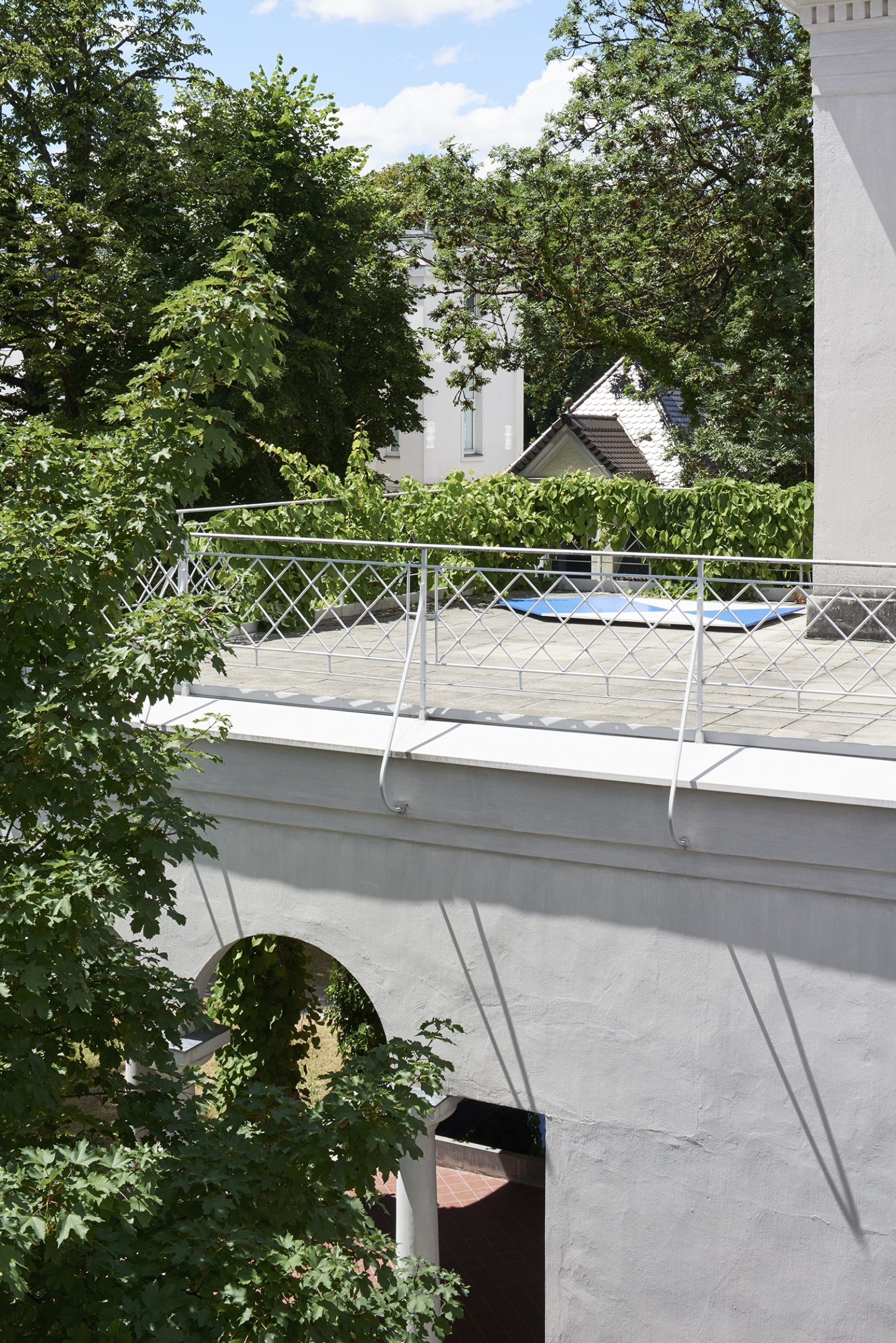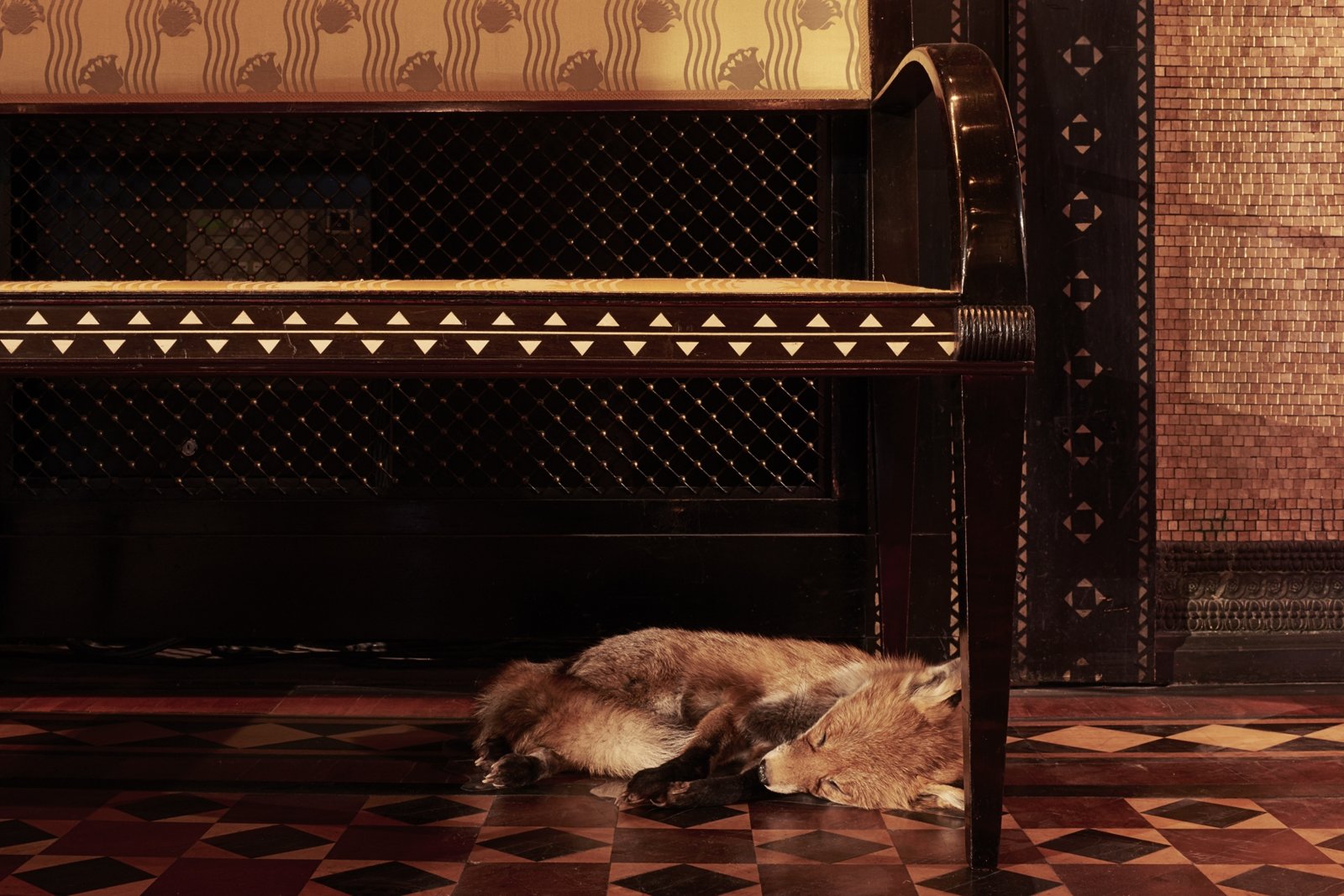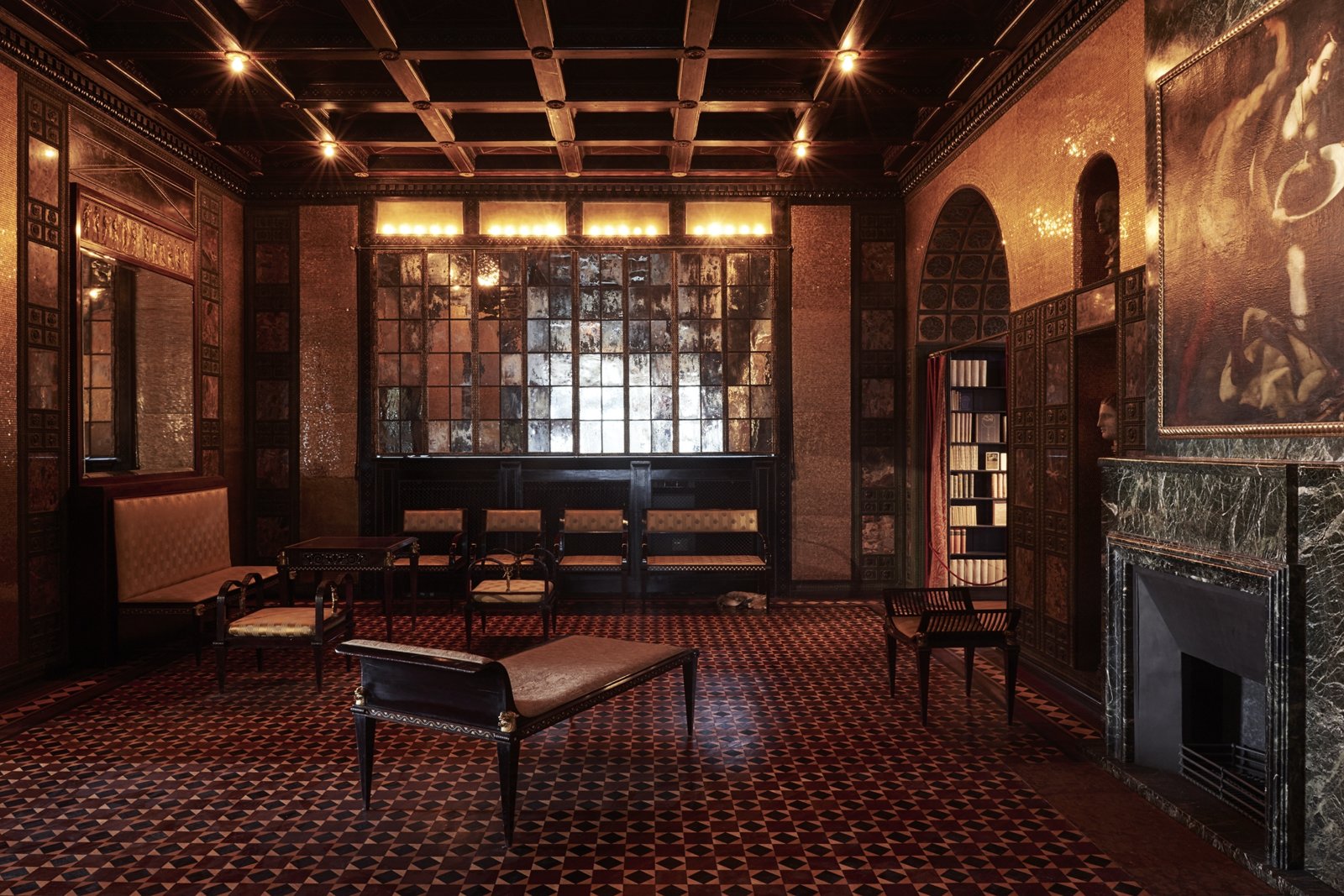Abbas Akhavan – Museum Villa Stuck, JUNE 29–OCTOBER 1, 2017
Abbas Akhavan
June 29–October 1, 2017
Museum Villa Stuck, Munich, Germany
Abbas Akhavan is one of Canada’s emerging artists and part of a generation of art practitioners who focus on social subjects in their site-specific, often ephemeral works. Born in Tehran in 1977, Akhavan will present his first major solo show at the Museum Villa Stuck, combining older works with pieces created especially for this exhibition. This show, comprising of mostly sculptures and installations, explores issues related to destruction, marginalization as well as acts of preservation and regeneration in the shifting and repurposed spaces of the museum.
Visitors enter the studio building, built by Franz von Stuck in 1914/15 and are immediately confronted with a barrier. Untitled Garden (2012/17), a hedge of Thuja occidentalis brabant, forces them to make a detour. Used as a demarcation of private or public space in cities and suburbs alike, the hedge creates a boundary and prevents immediate access to the gallery. The Thuja, the evergreen arborvitae or tree of life, has its own history of colonialism: indigenous to the eastern part of Canada, it became an article of trade between Great Britain and Canada—a British colony at the time. As early as the sixteenth century, the Thuja was used to mark off private property. Akhavan’s artistic gesture describes the multi-layered history of the tree: he moves objects familiar from domestic spaces into the gallery. In that shift between the outside and inside, the serial row of trees is used to combine traditional methods of marking private property with the viewer’s experience, thus making them feel potential trespassers.
For this exhibition, Akhavan has chosen to leave visible all the imperfections and drill holes from the preceding show. The museum’s temperature control system has been turned off. Previously walled-up doors have been cut open, and windows a re left ajar, allowing light and fresh air to permeate into the space, thereby raising questions about established boundaries of the museum and t he limits of museological tasks: are the current methods of preservation still tenable and appropriate?
Akhavan calls his works “studies” or “variations”; they are conceptual in nature and indicate that they are part of a creative process that is open-ended. In Villa Stuck, these studies and variations are visualized through a range of mediums and forms including plants, animals and other organic materials that reference the four elements: fire, water, earth and air.
Visitors to the Villa Stuck are familiar with Akhavan from his participation in the 2015 exhibition Common Grounds. At the time, he showed Study for a Hanging Garden (2013), an expansive installation featuring bronze casts of plants which grow only in the region between the Euphrates and Tigris rivers, and which are endangered as a result of the Iraq invasion in 2003 and the ongoing conflicts.
Akhavan’s work encompasses sculpture, installation, drawing, video and performance. The artist has had various scholarship residencies and, as yet, limited time for studio practice with the constant production of works that comes with it. Consequently, it is the occasion of the exhibition itself that becomes the focus of his production. Akhavan (born in Tehran in 1977, lives and works in Toronto) has shown his work in numerous international solo exhibitions, including solo exhibitions at The Delfina Foundation, London (2012); Mercer Union, Toronto (2015); FLORA, Bogota (2016) and, most recently, at SALT Galata in Istanbul (2017).
Documentation by Jann Averwerser.
